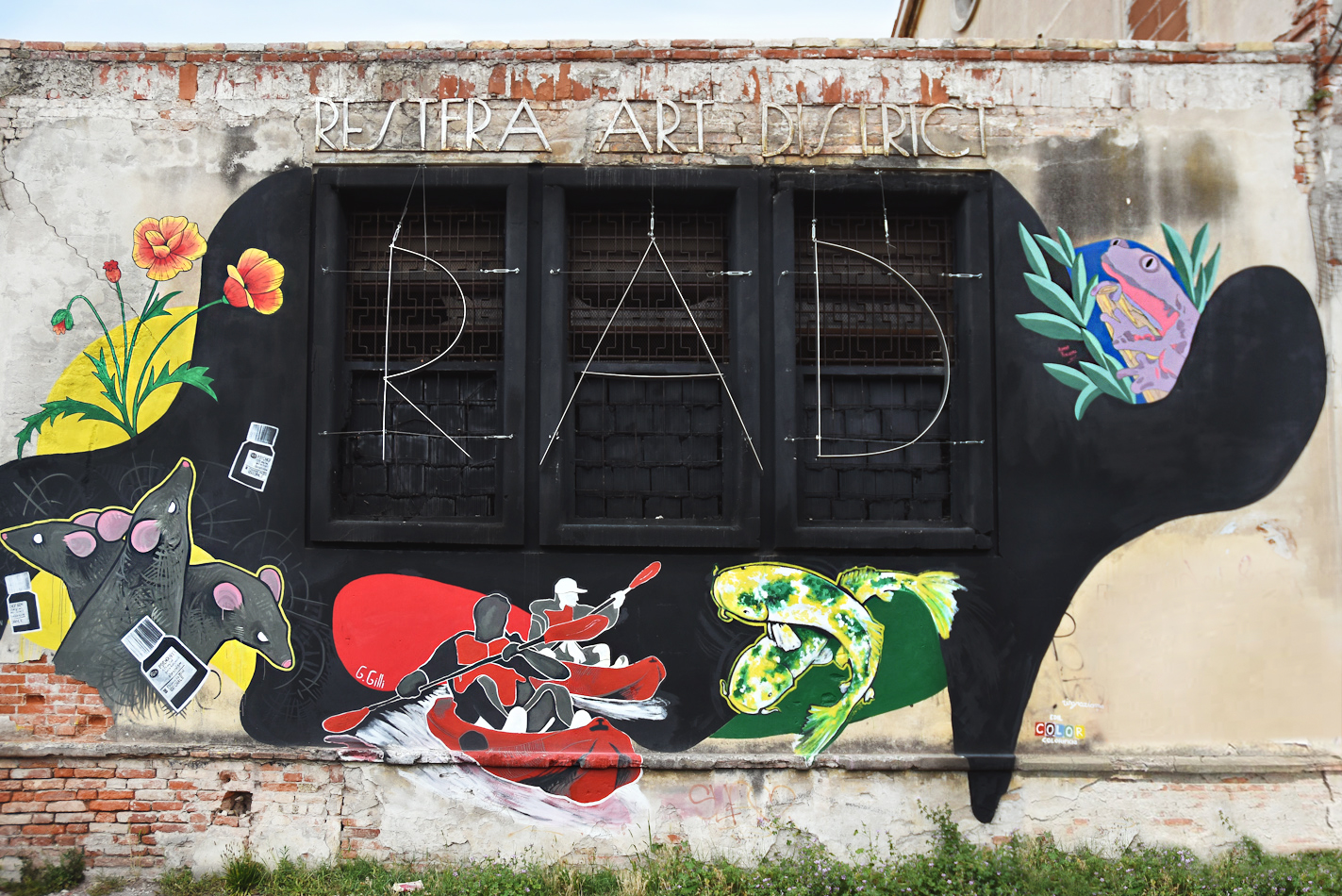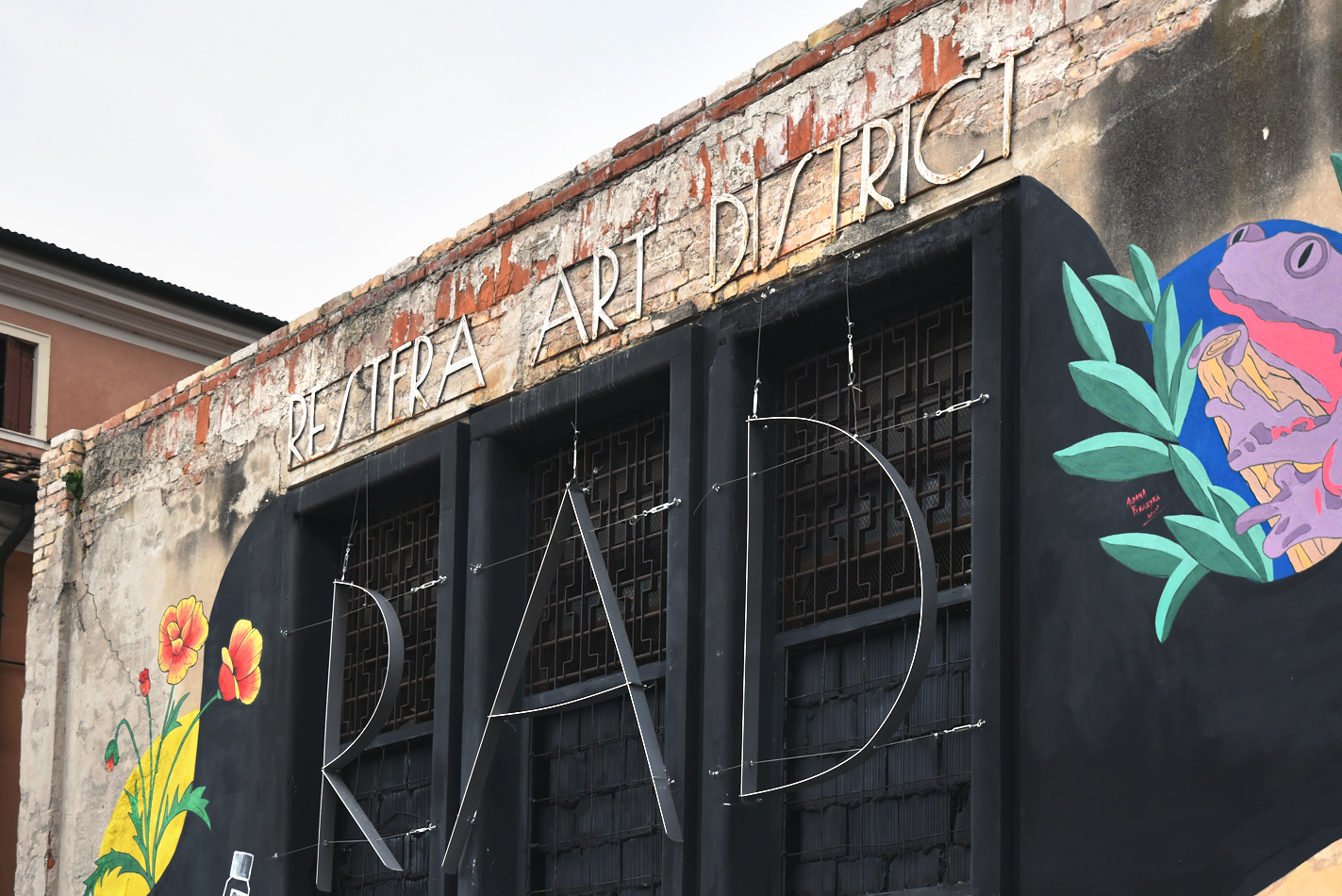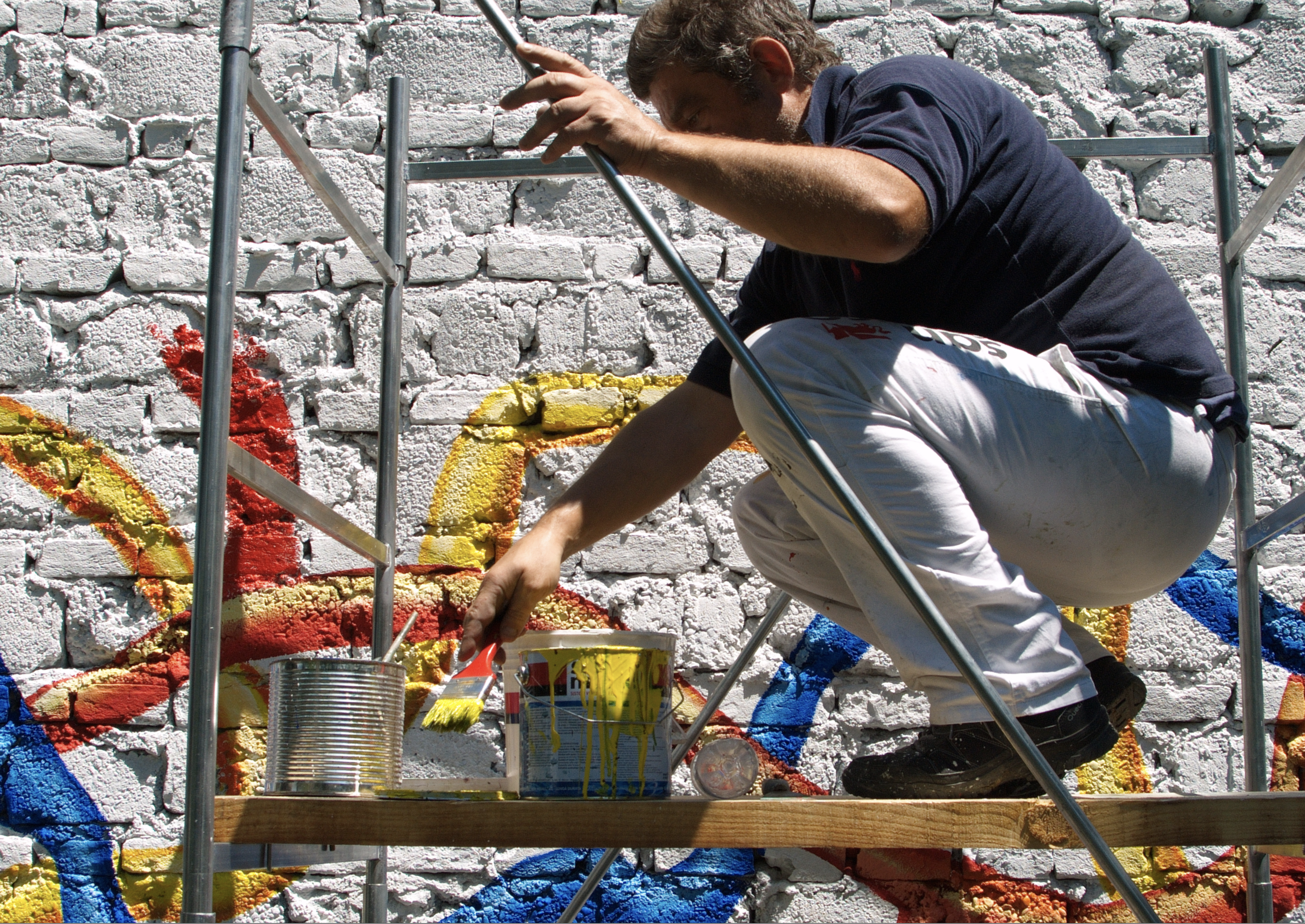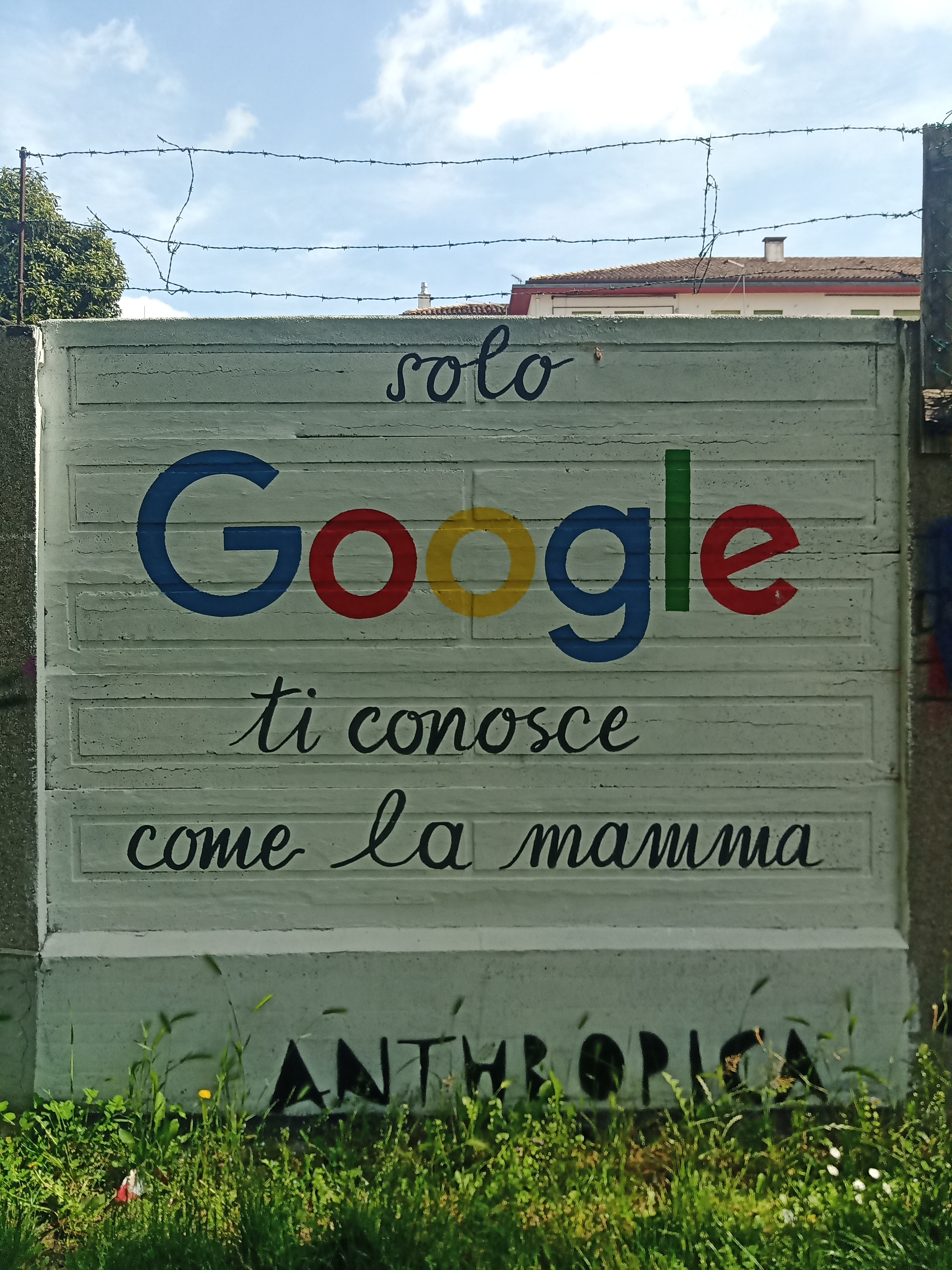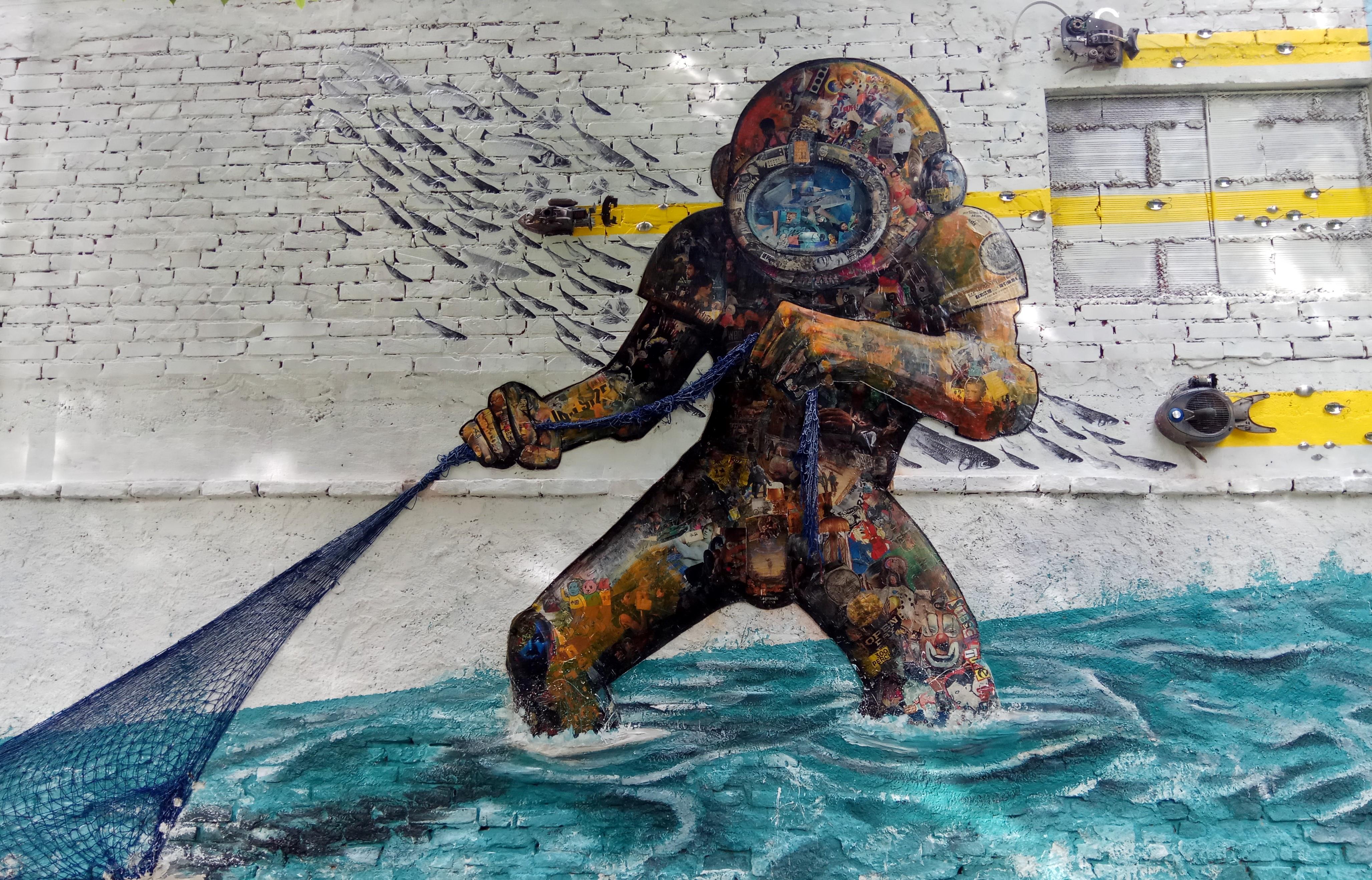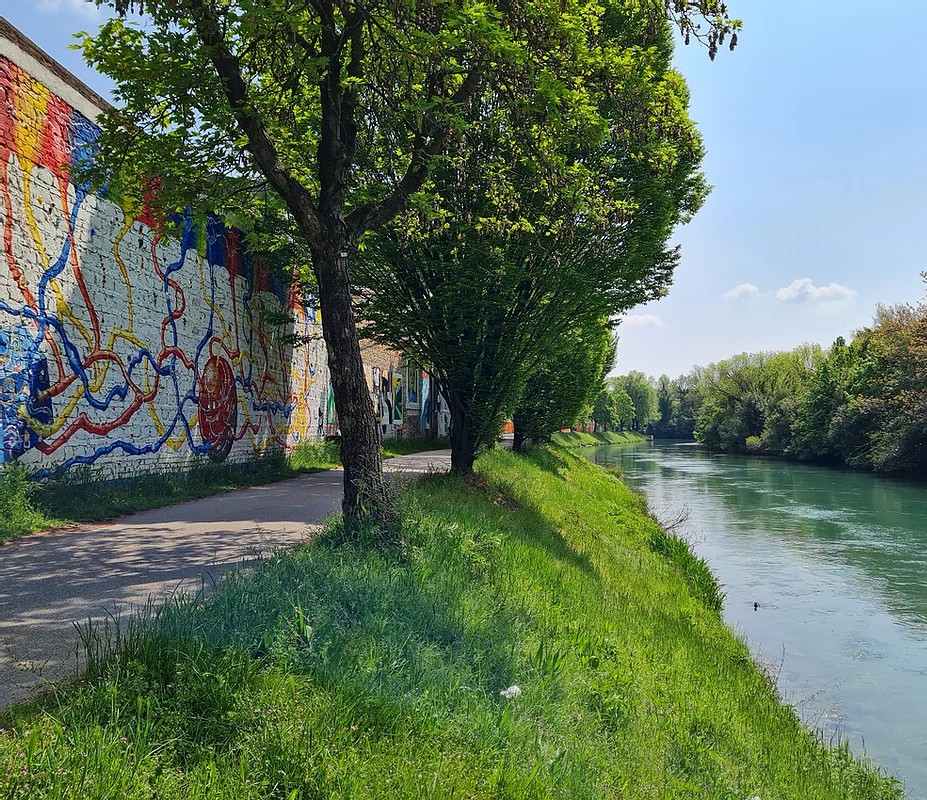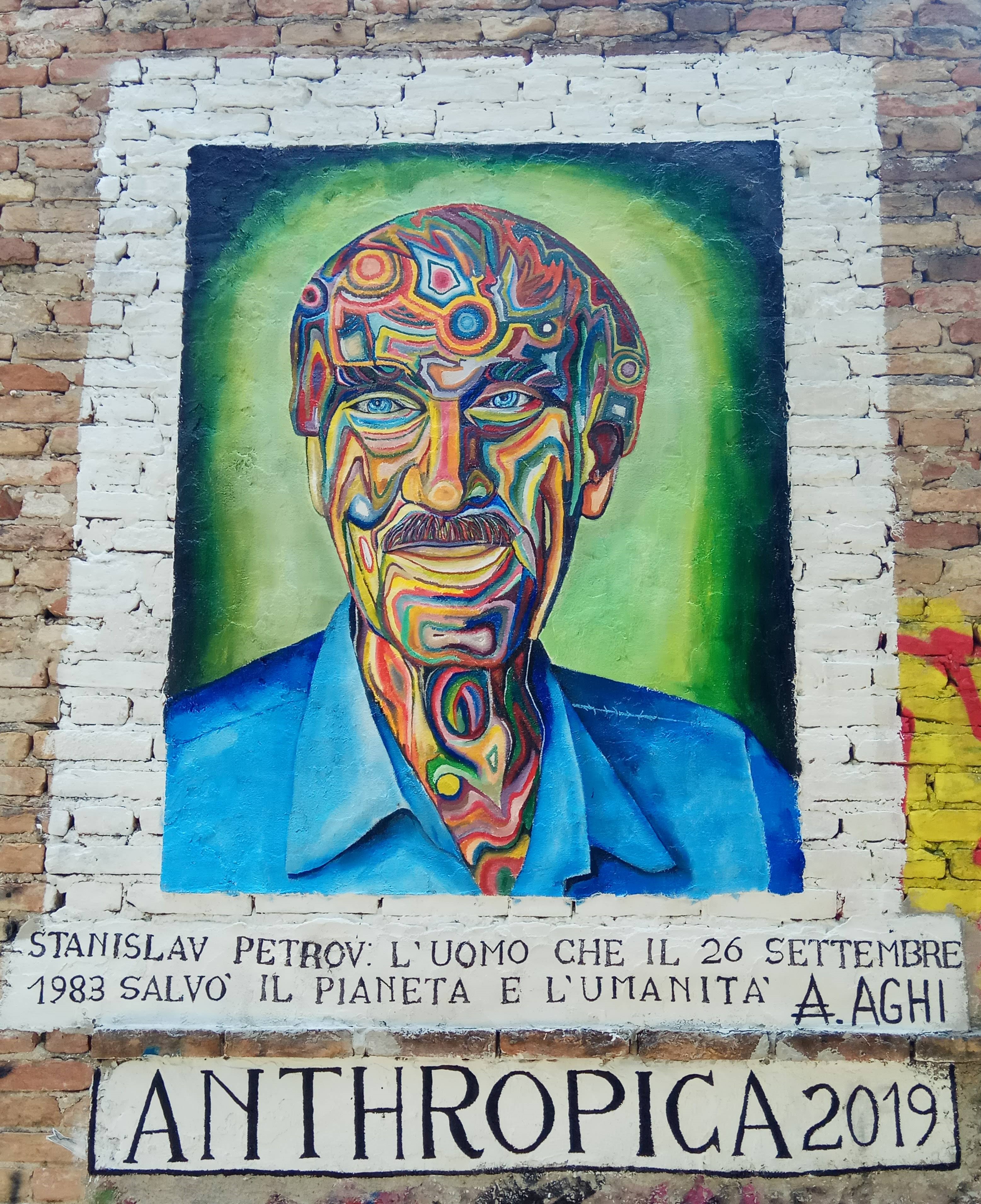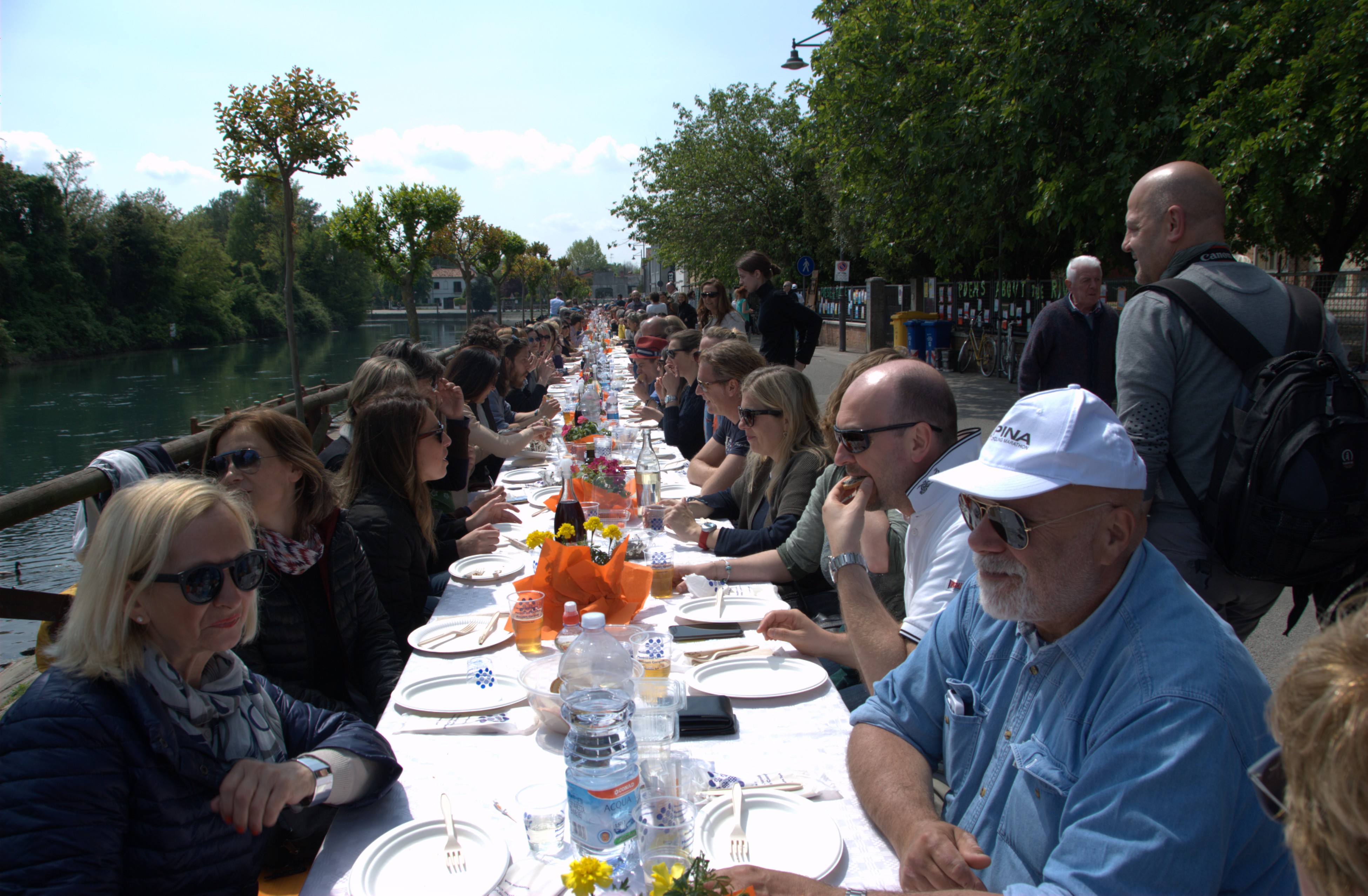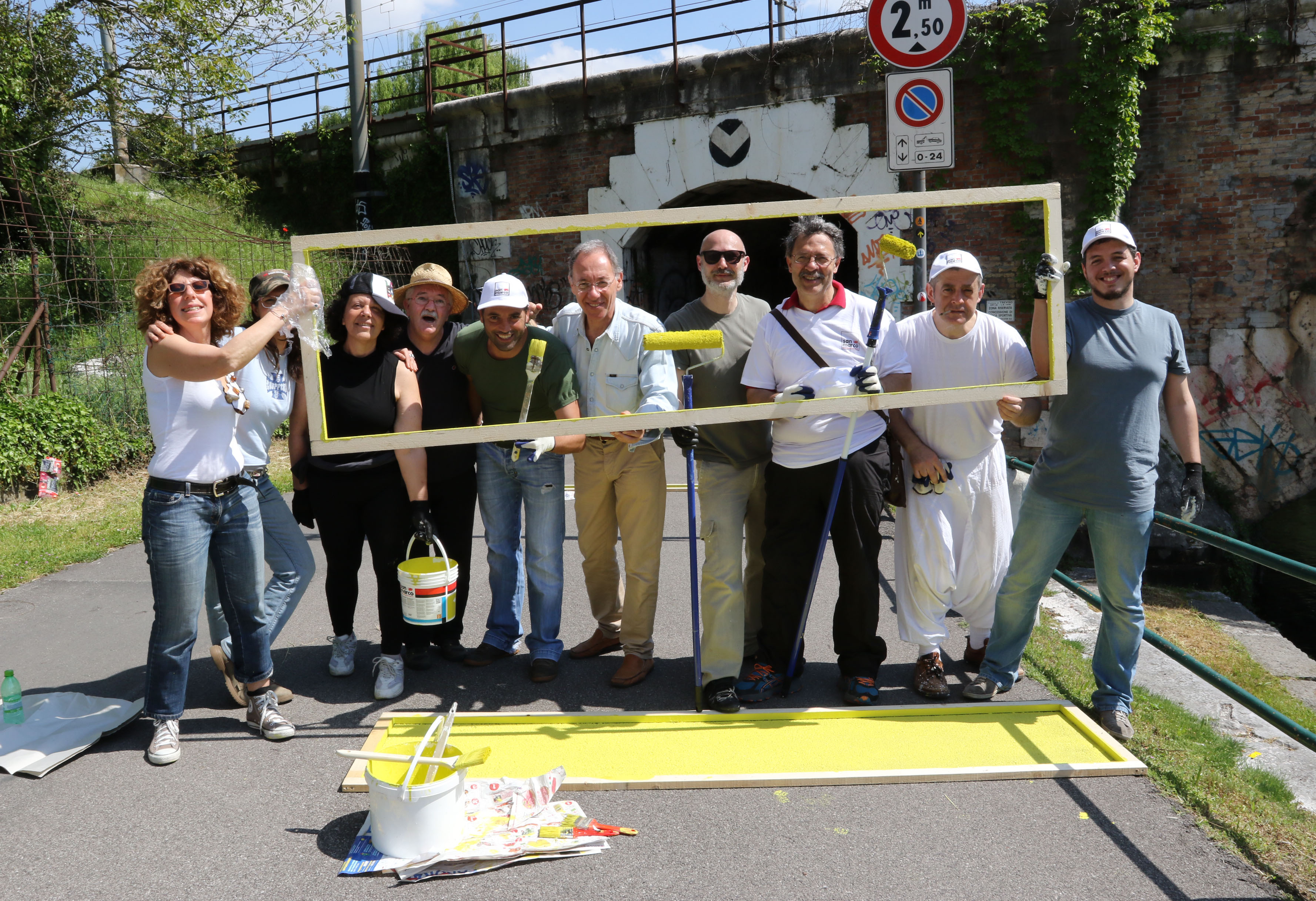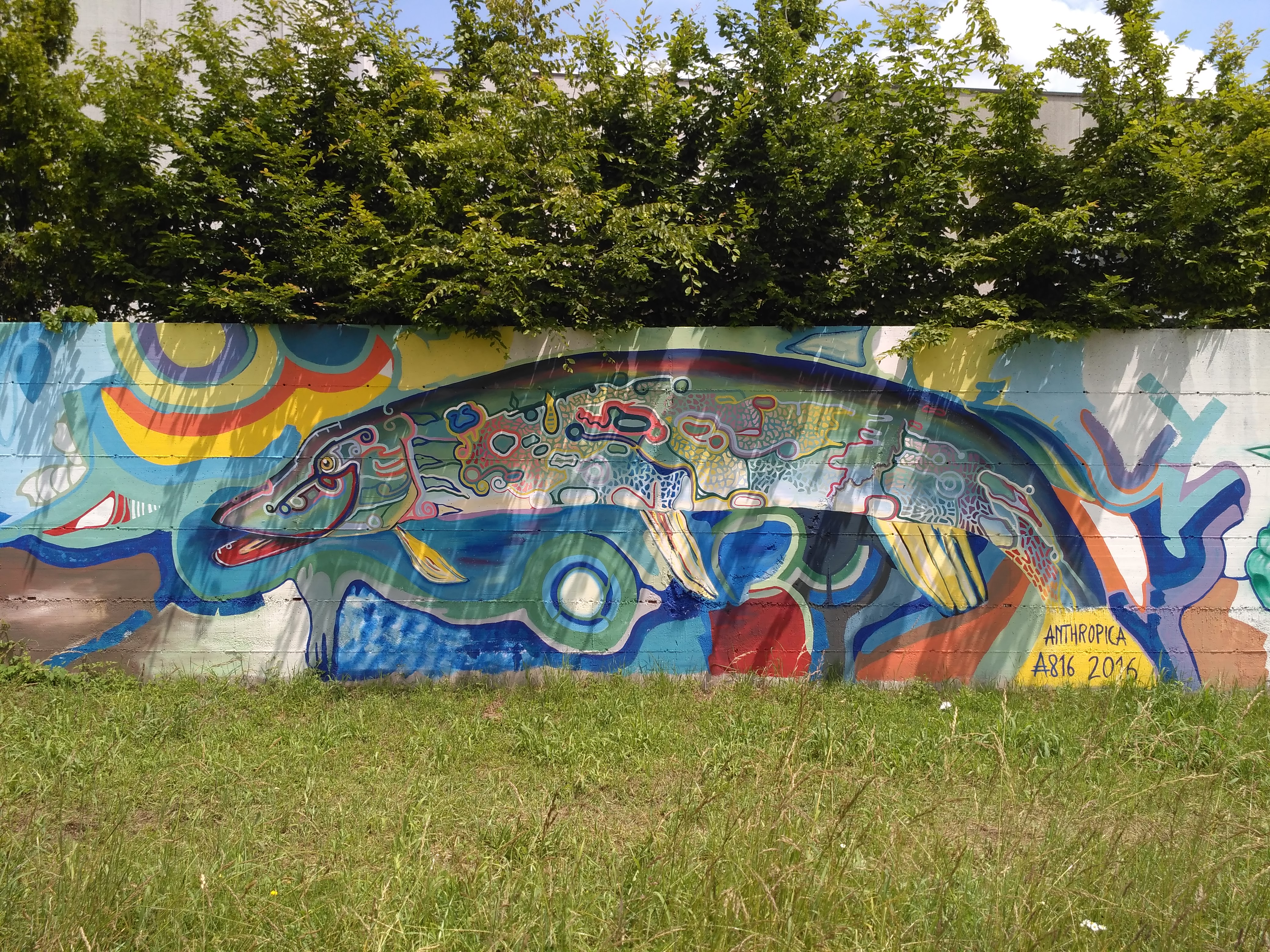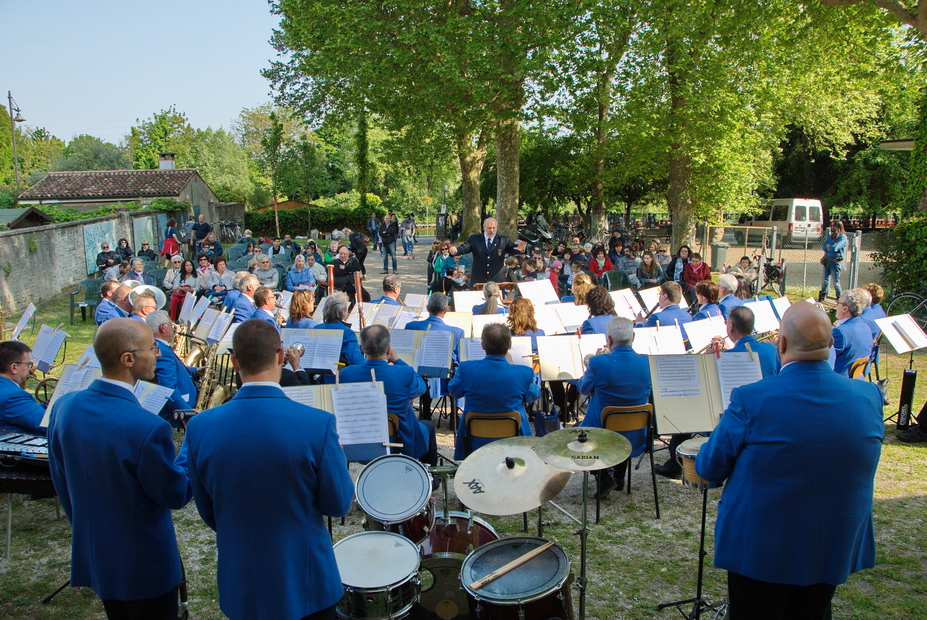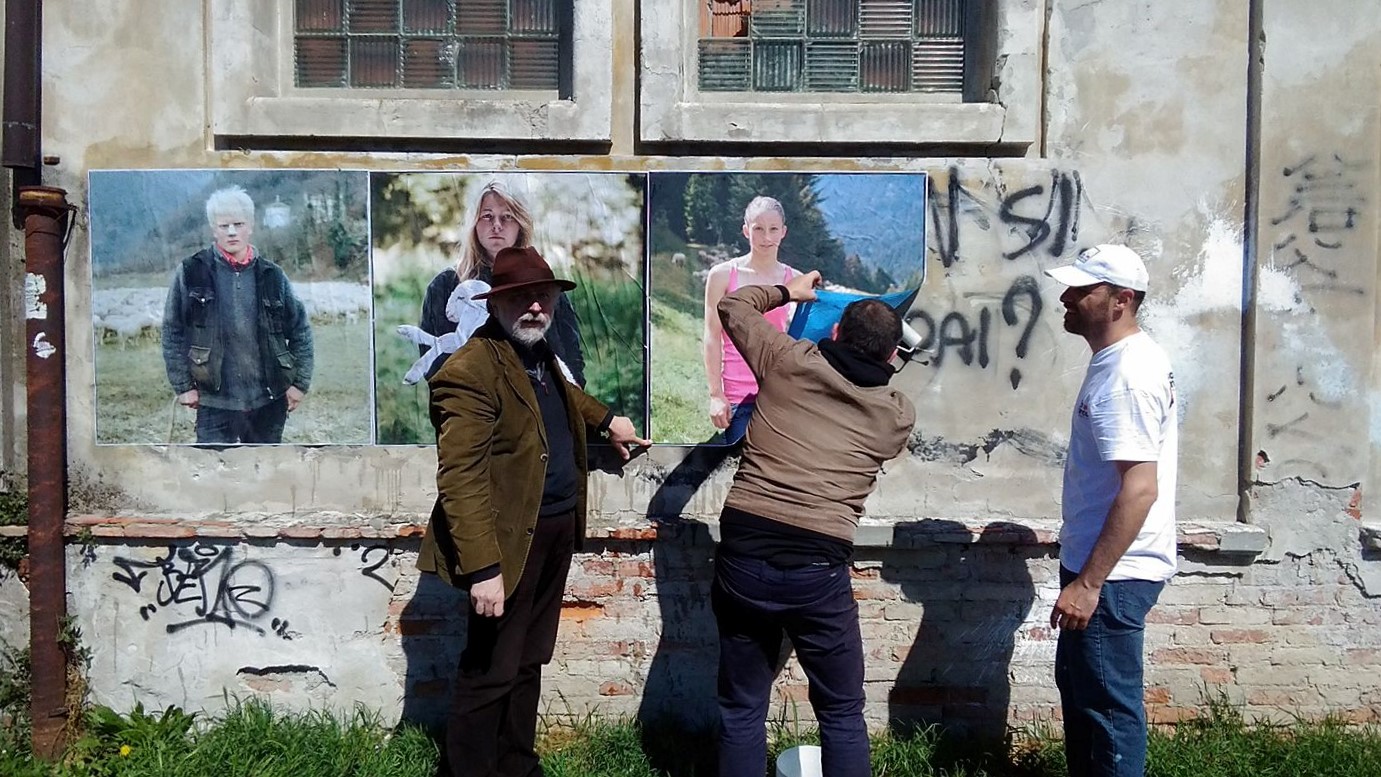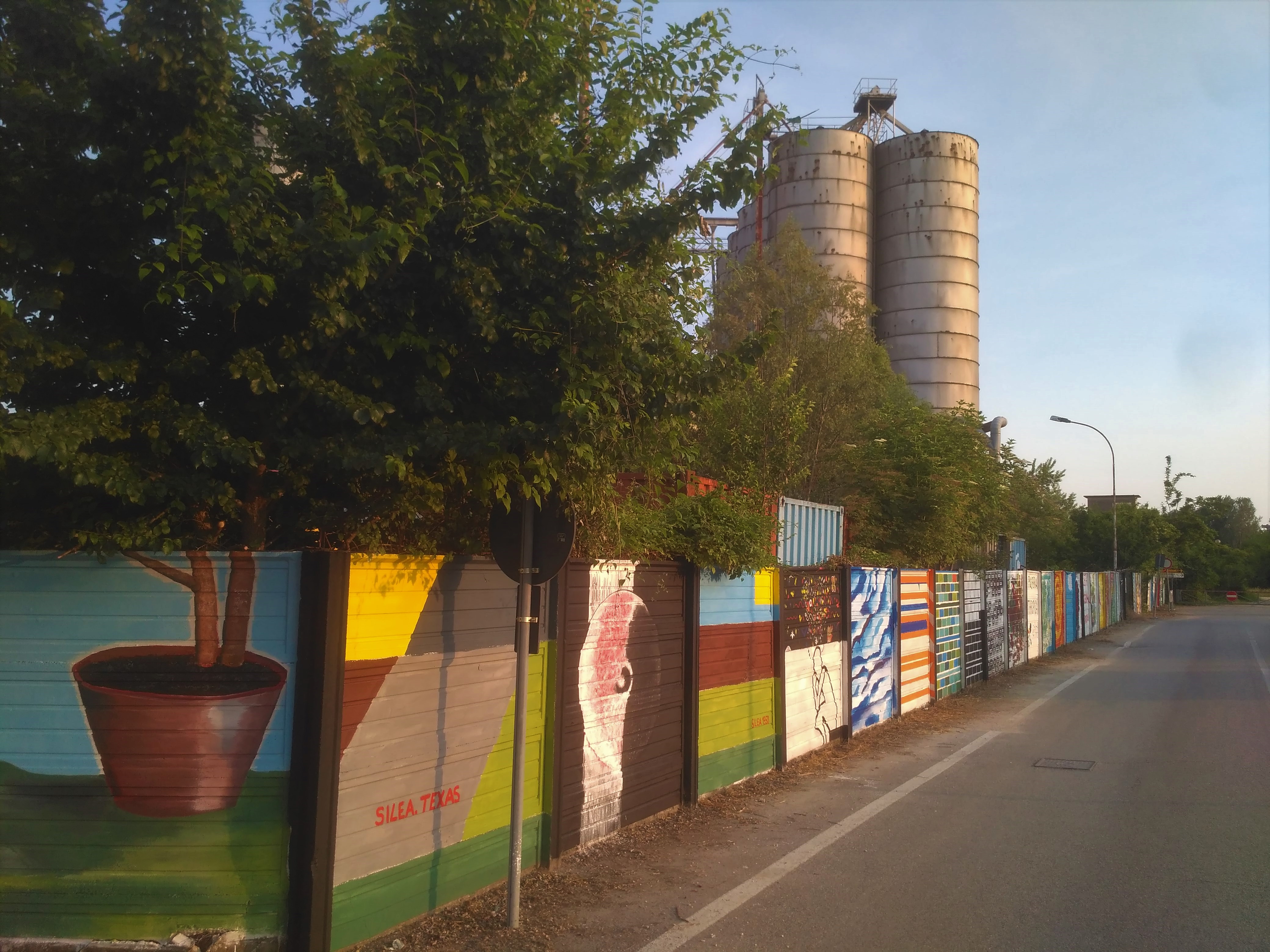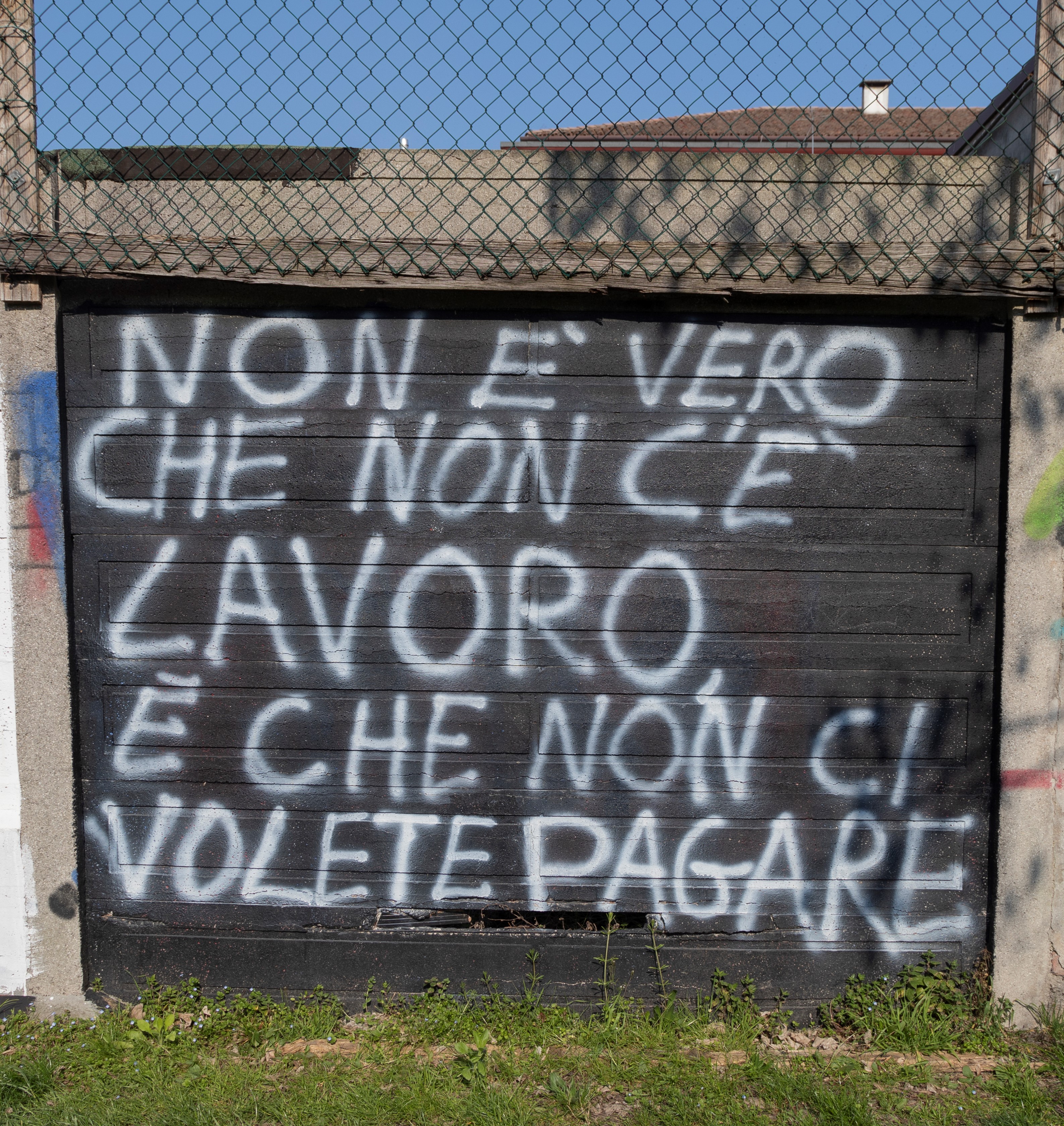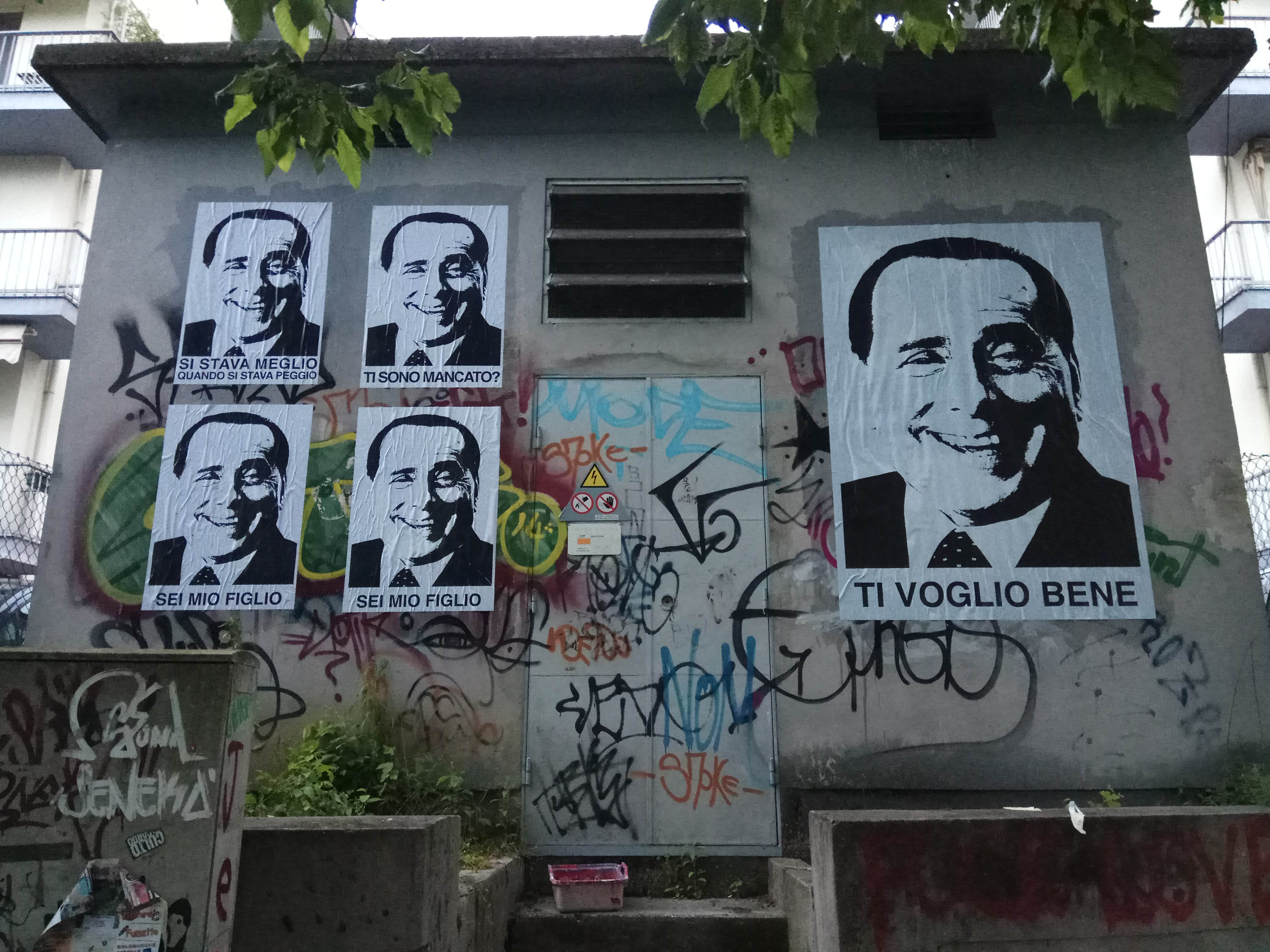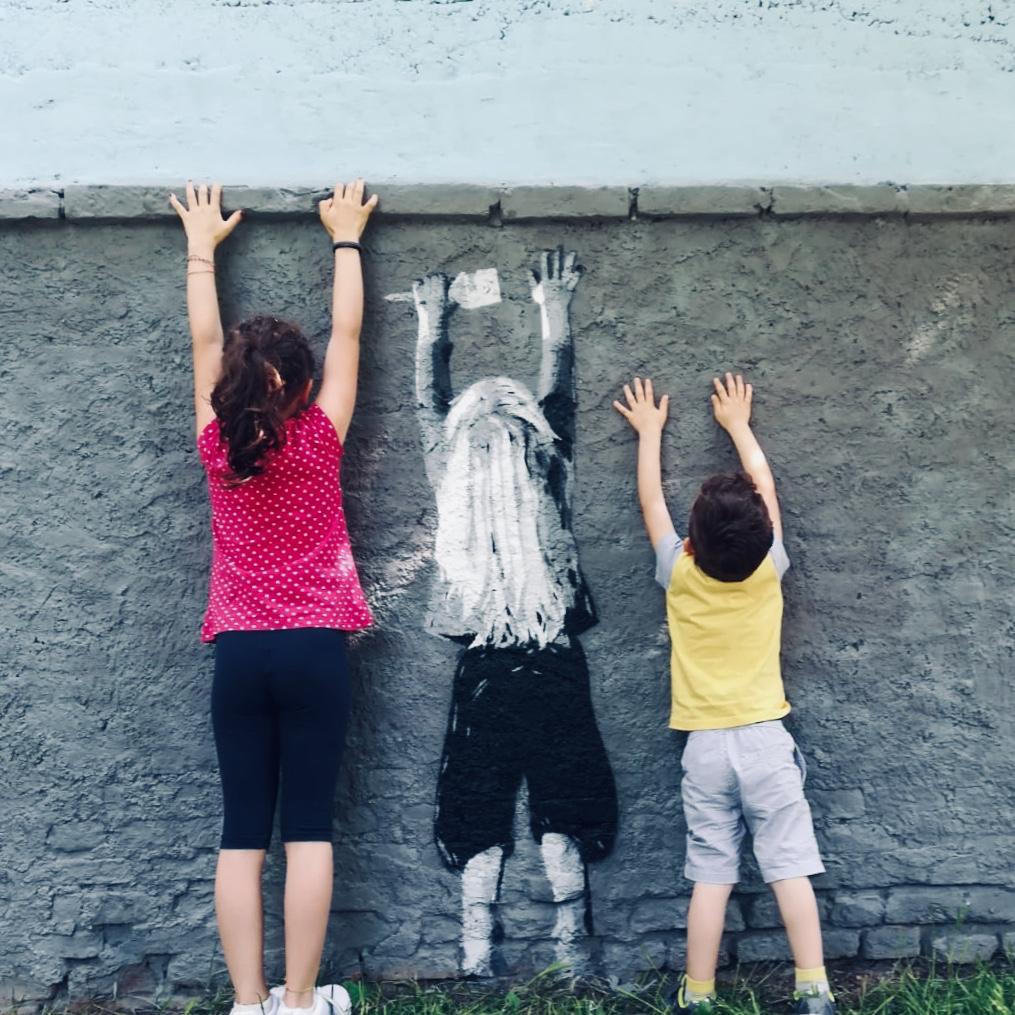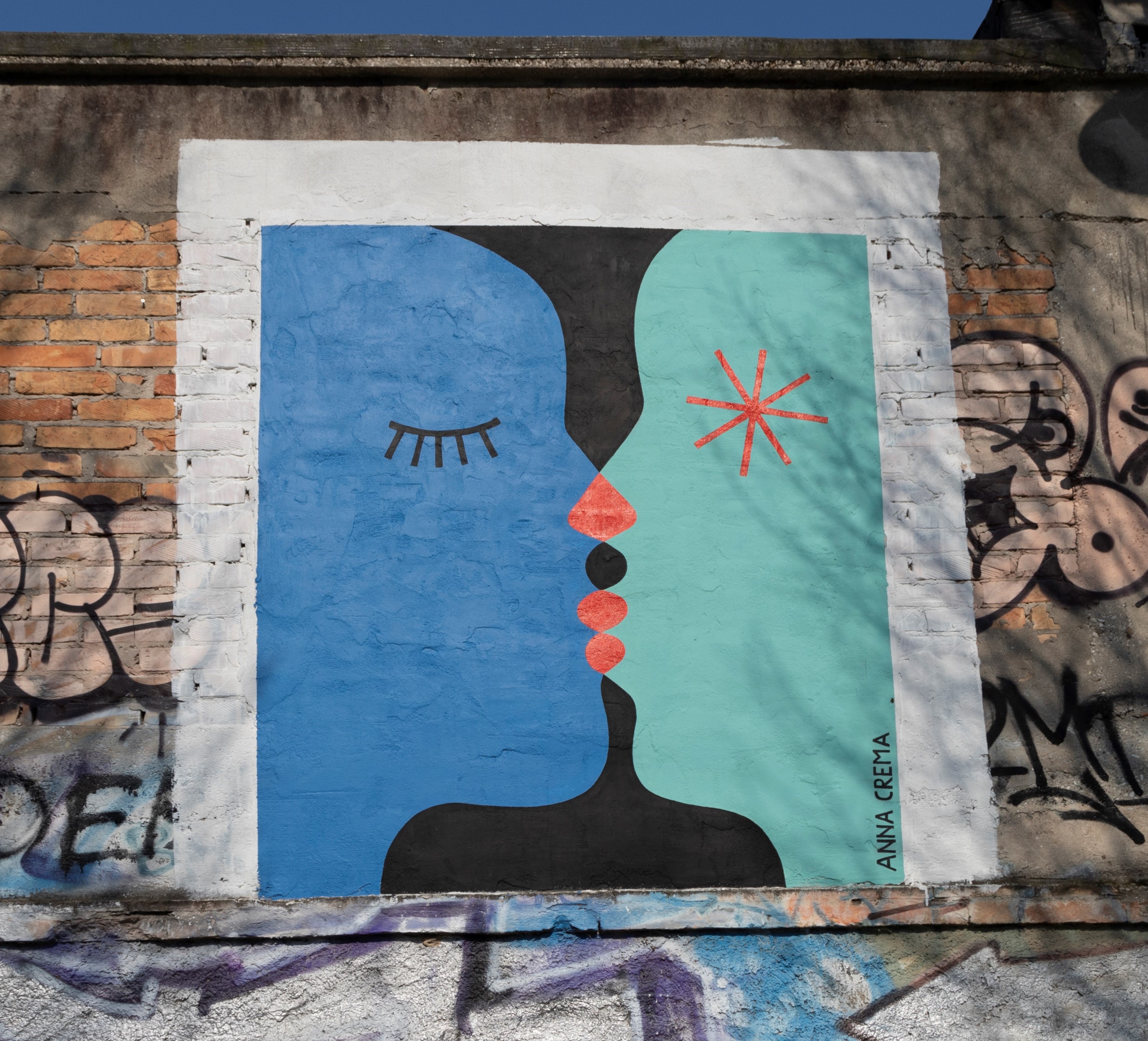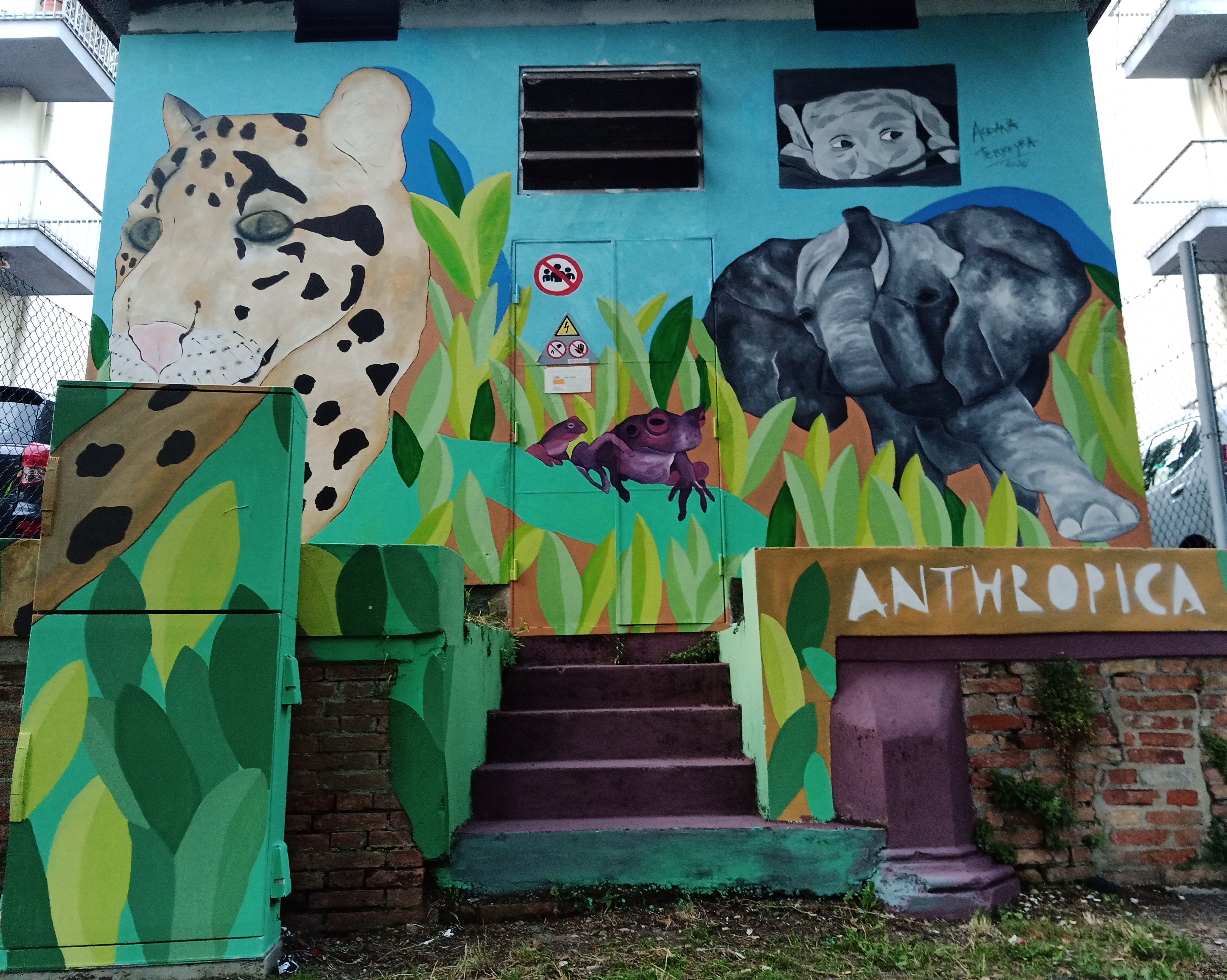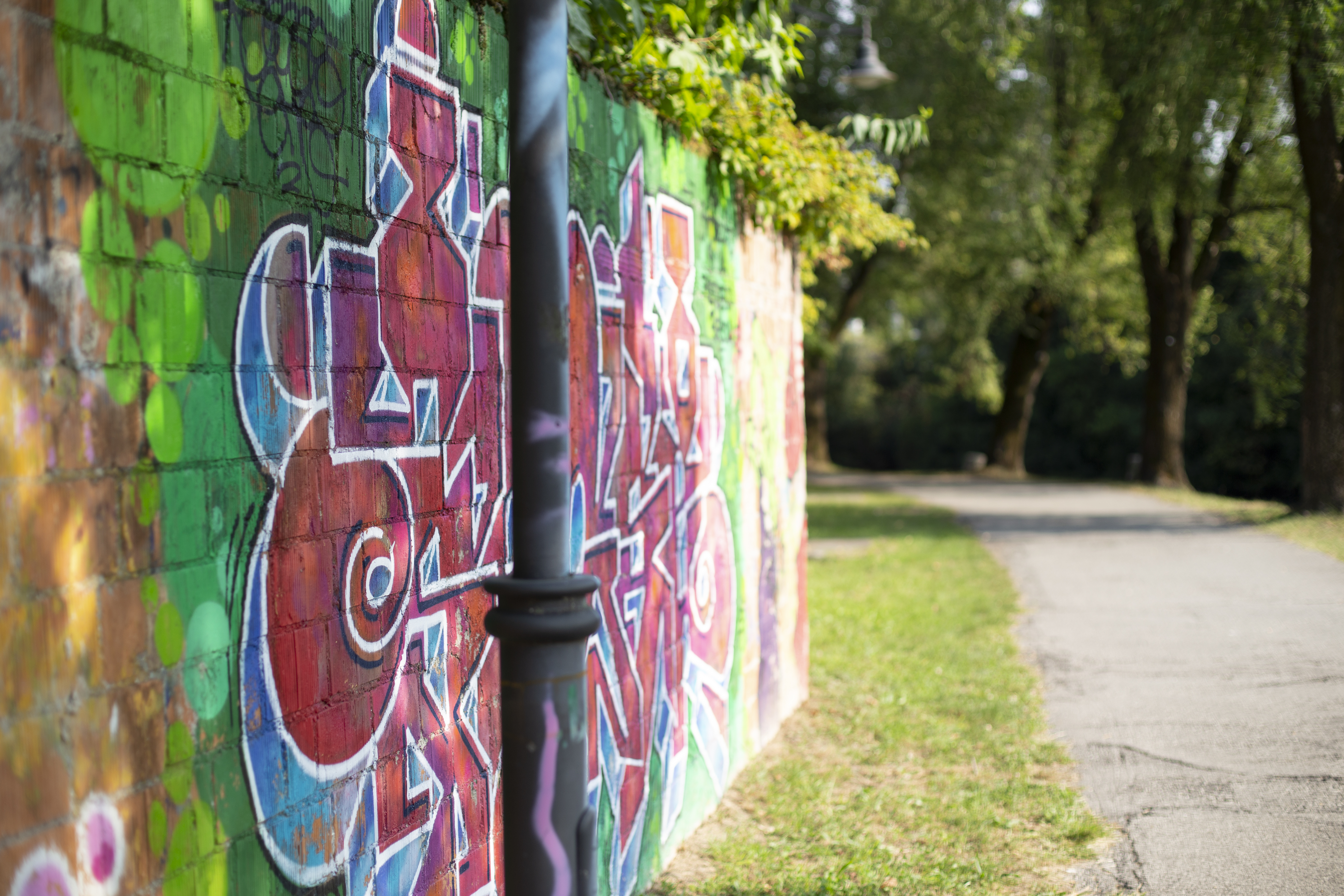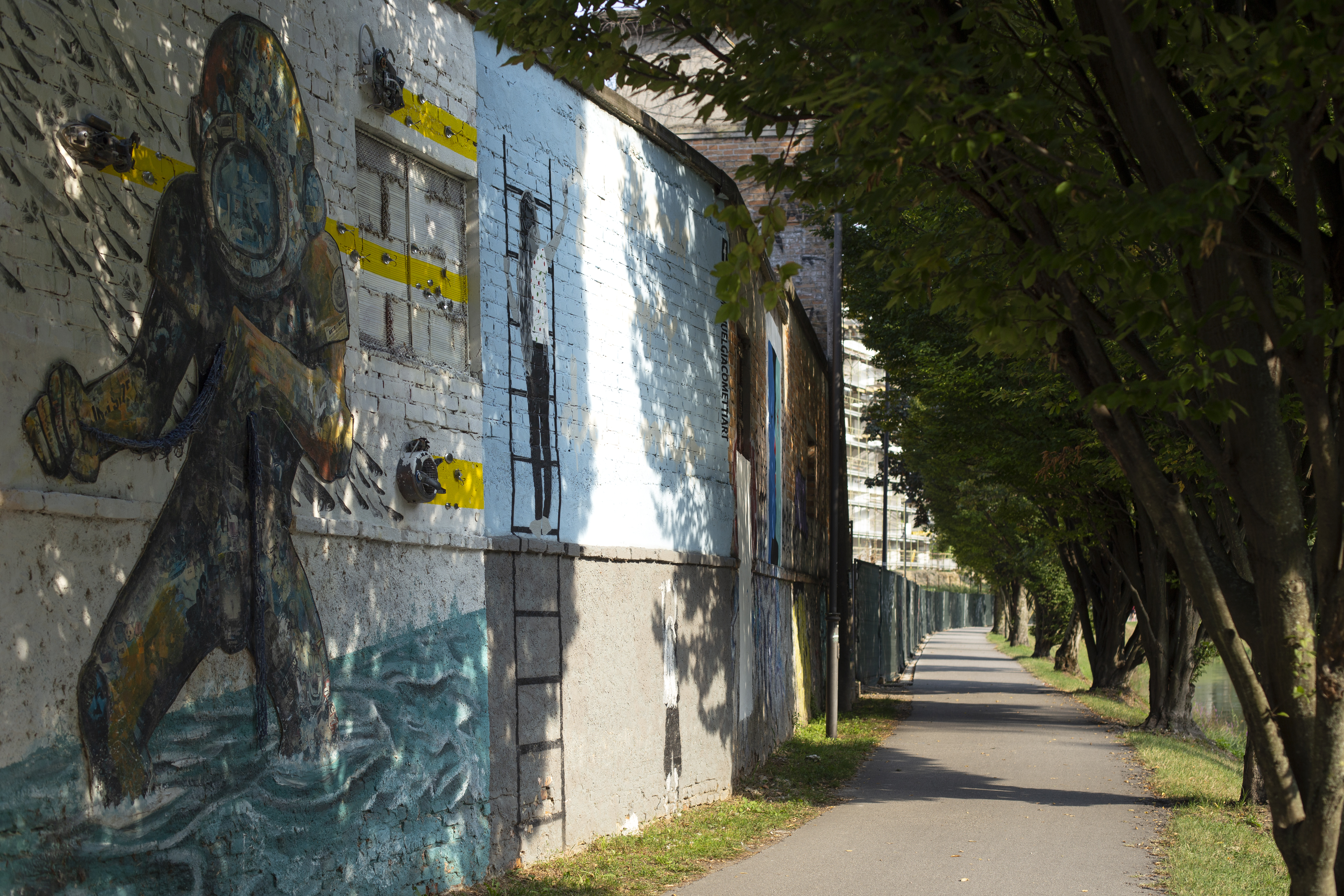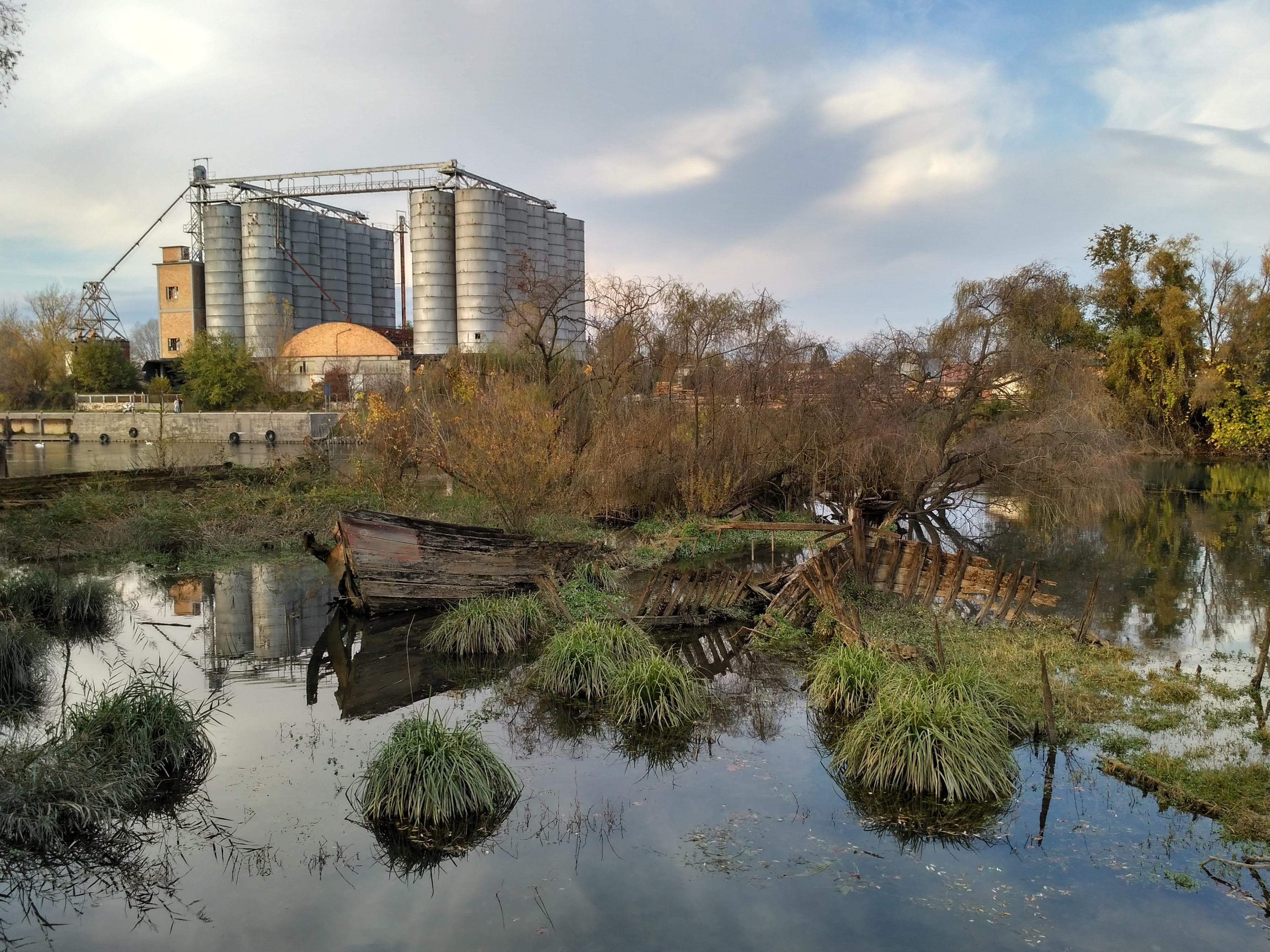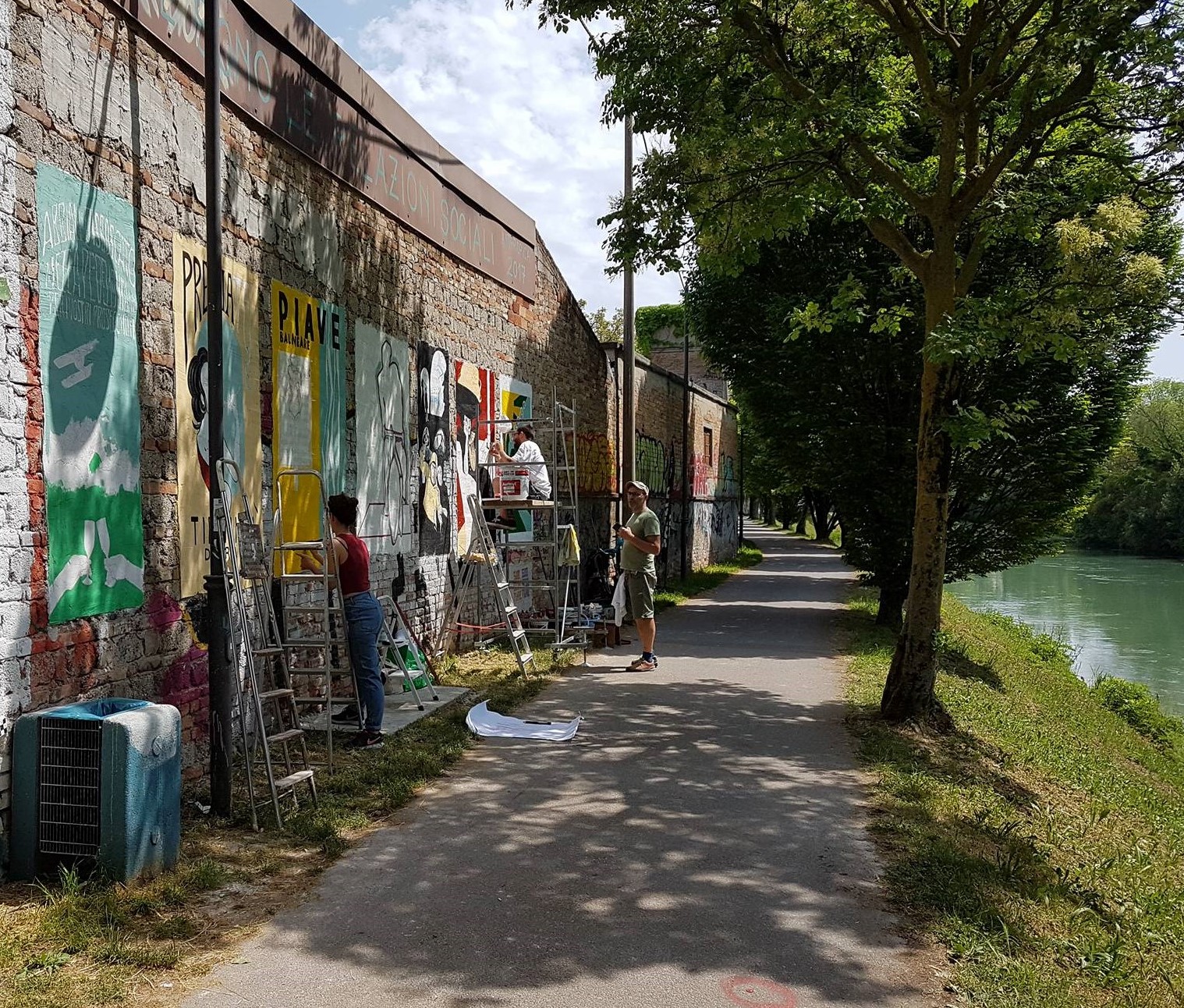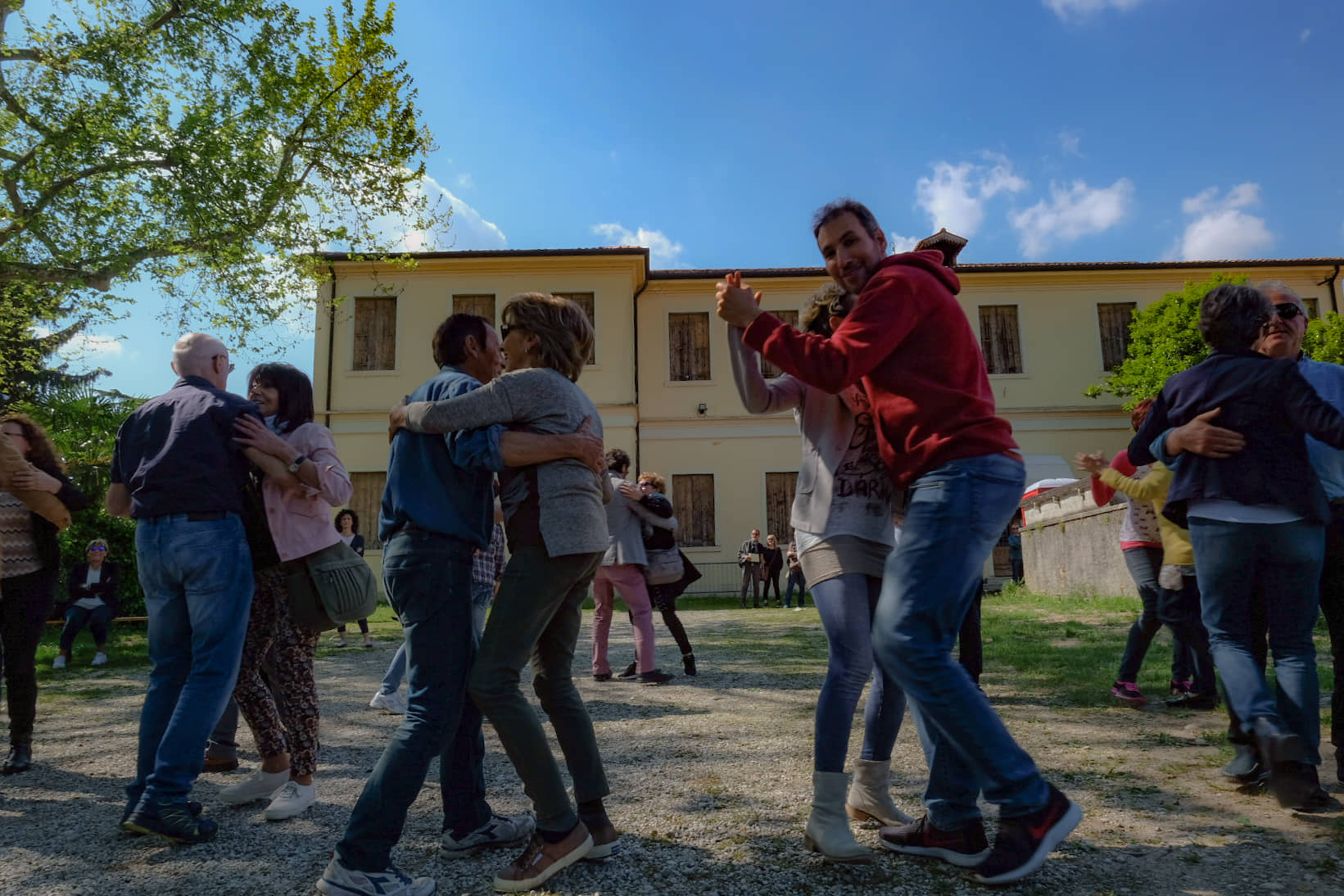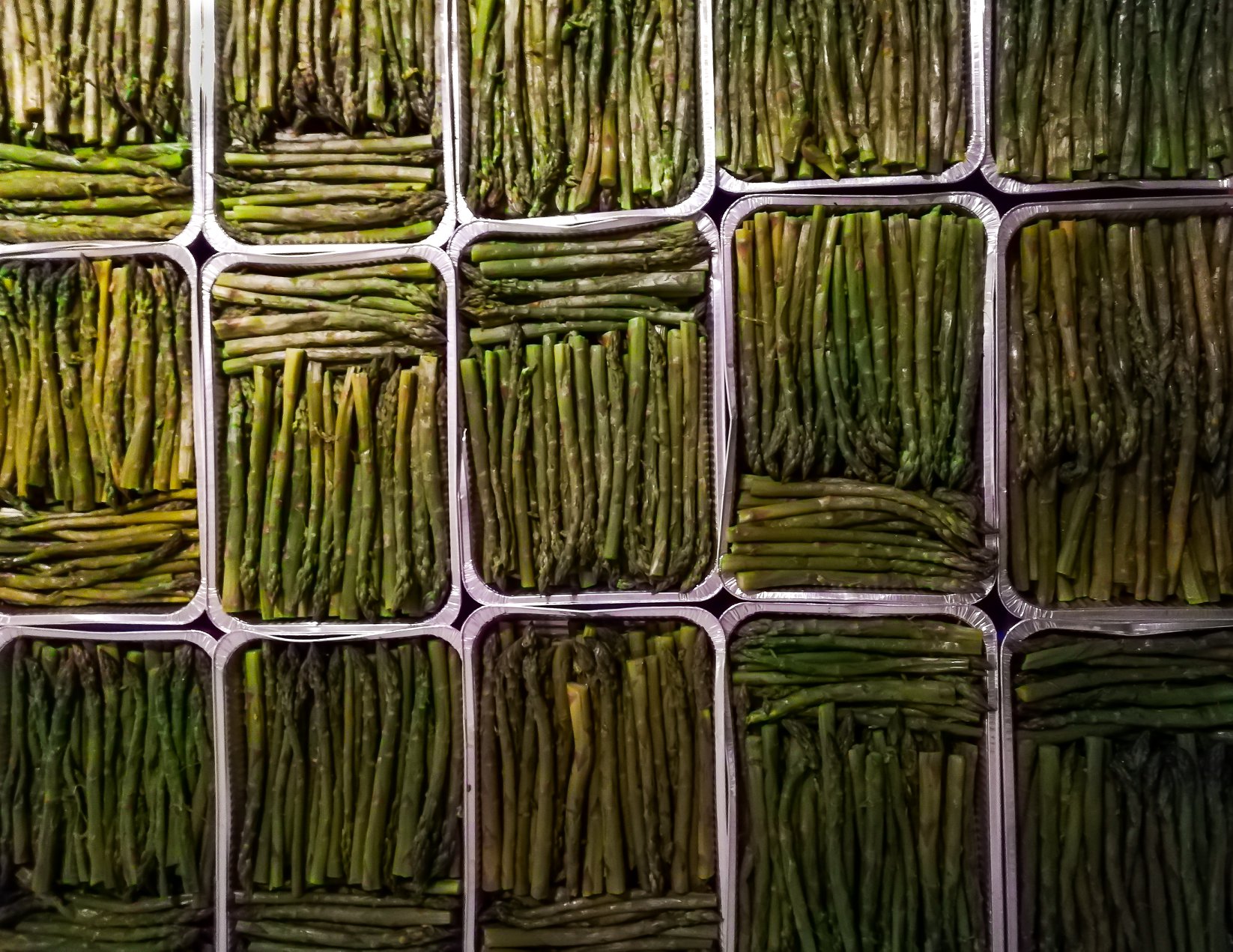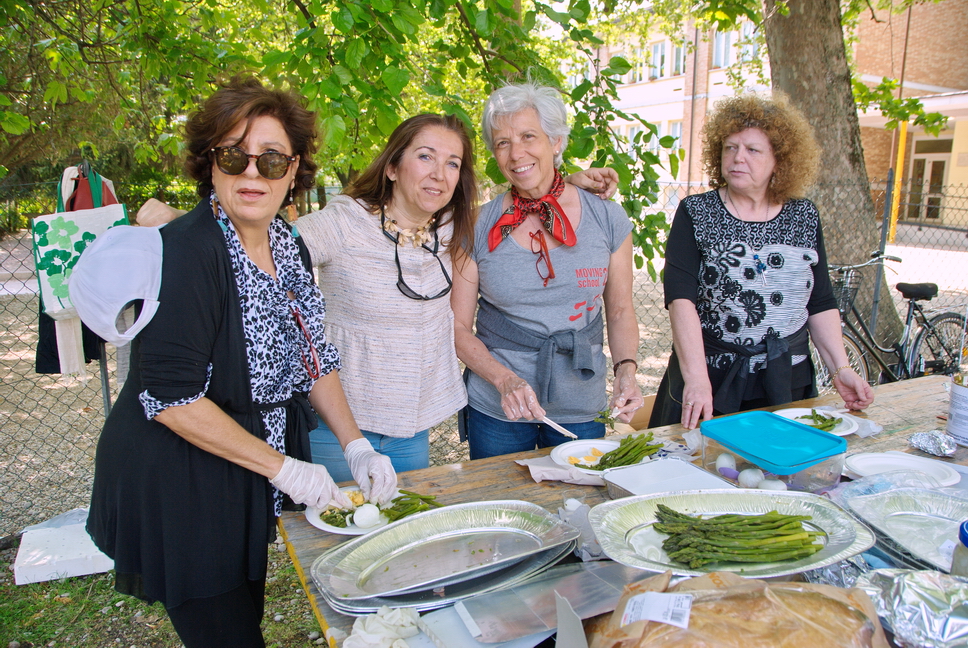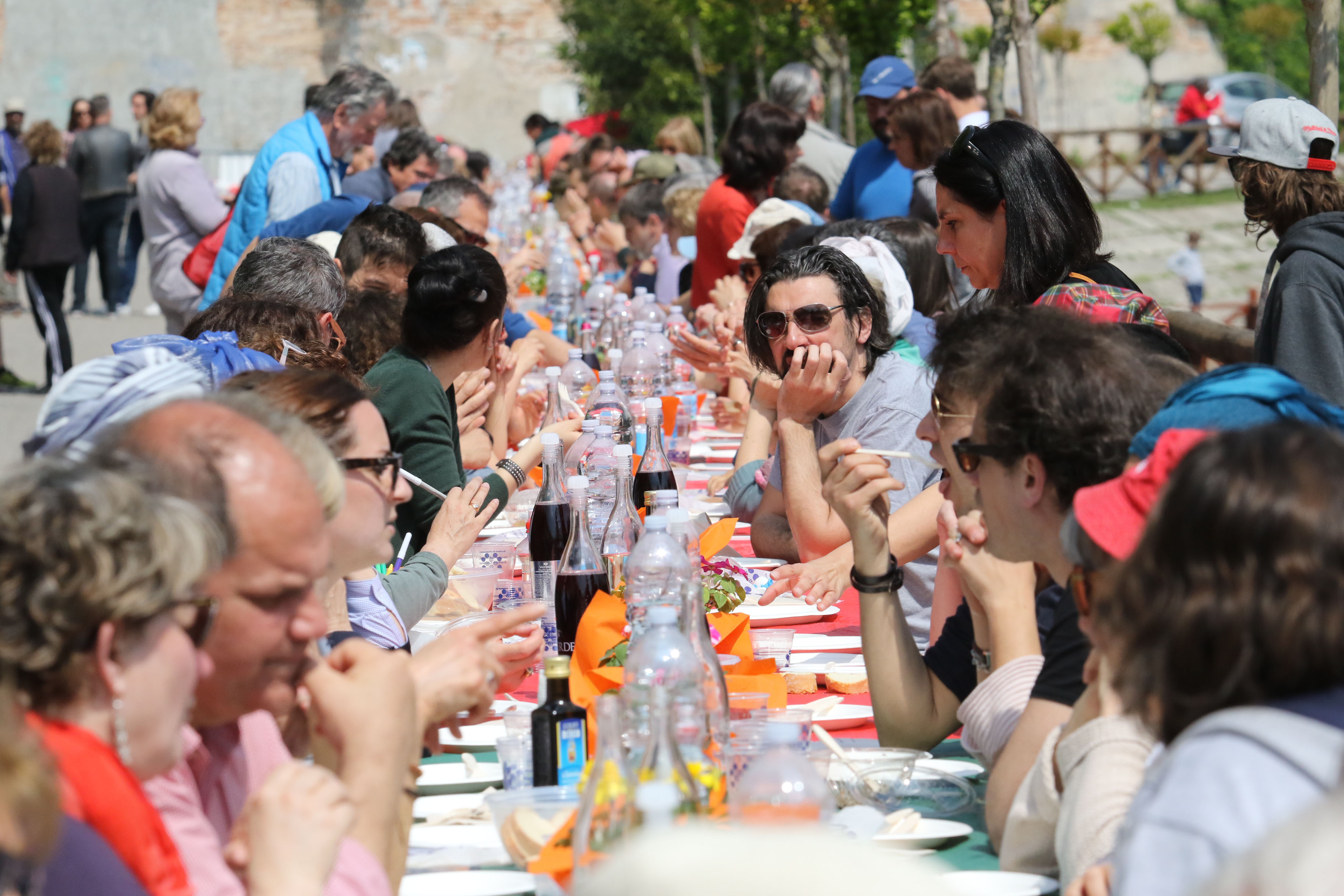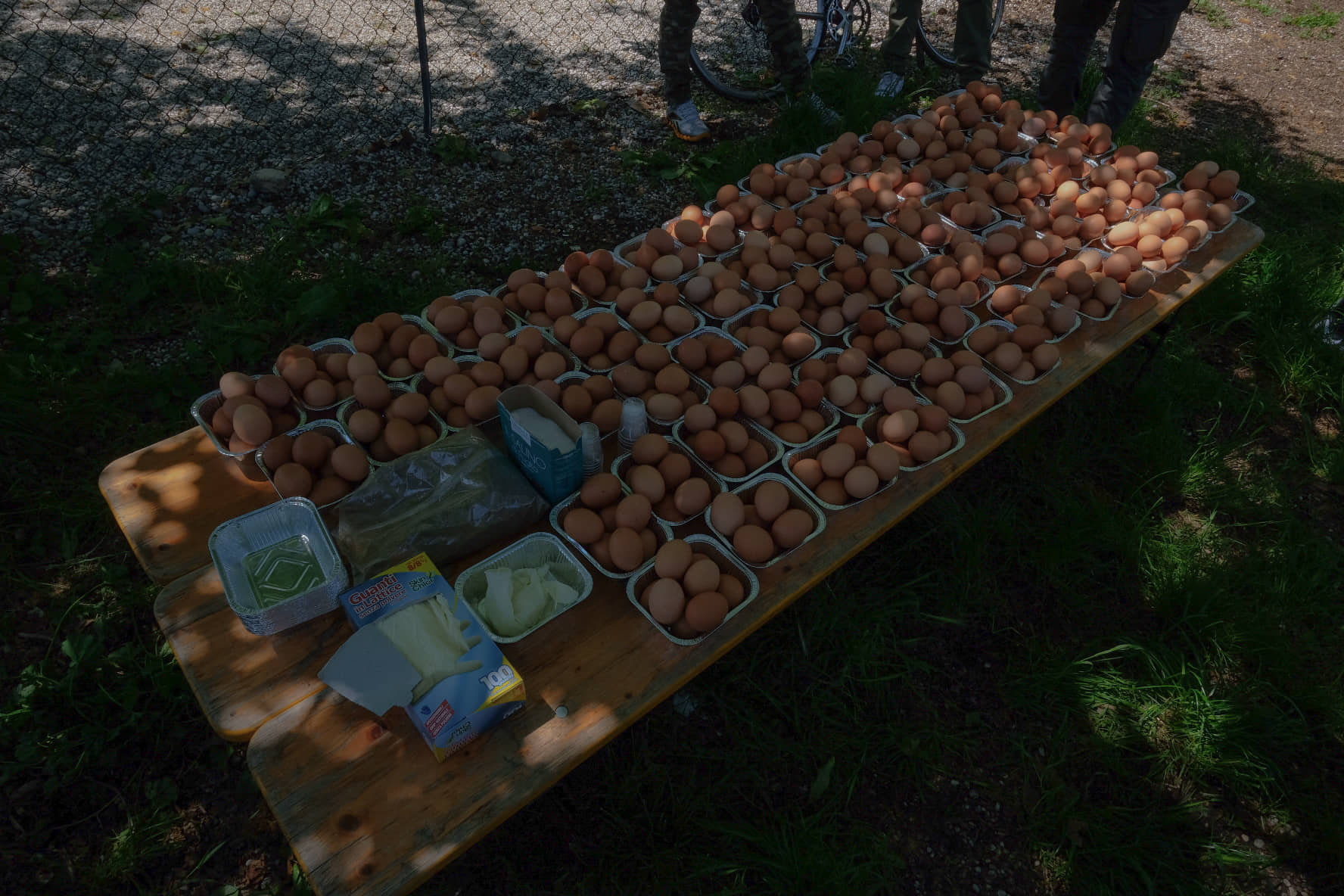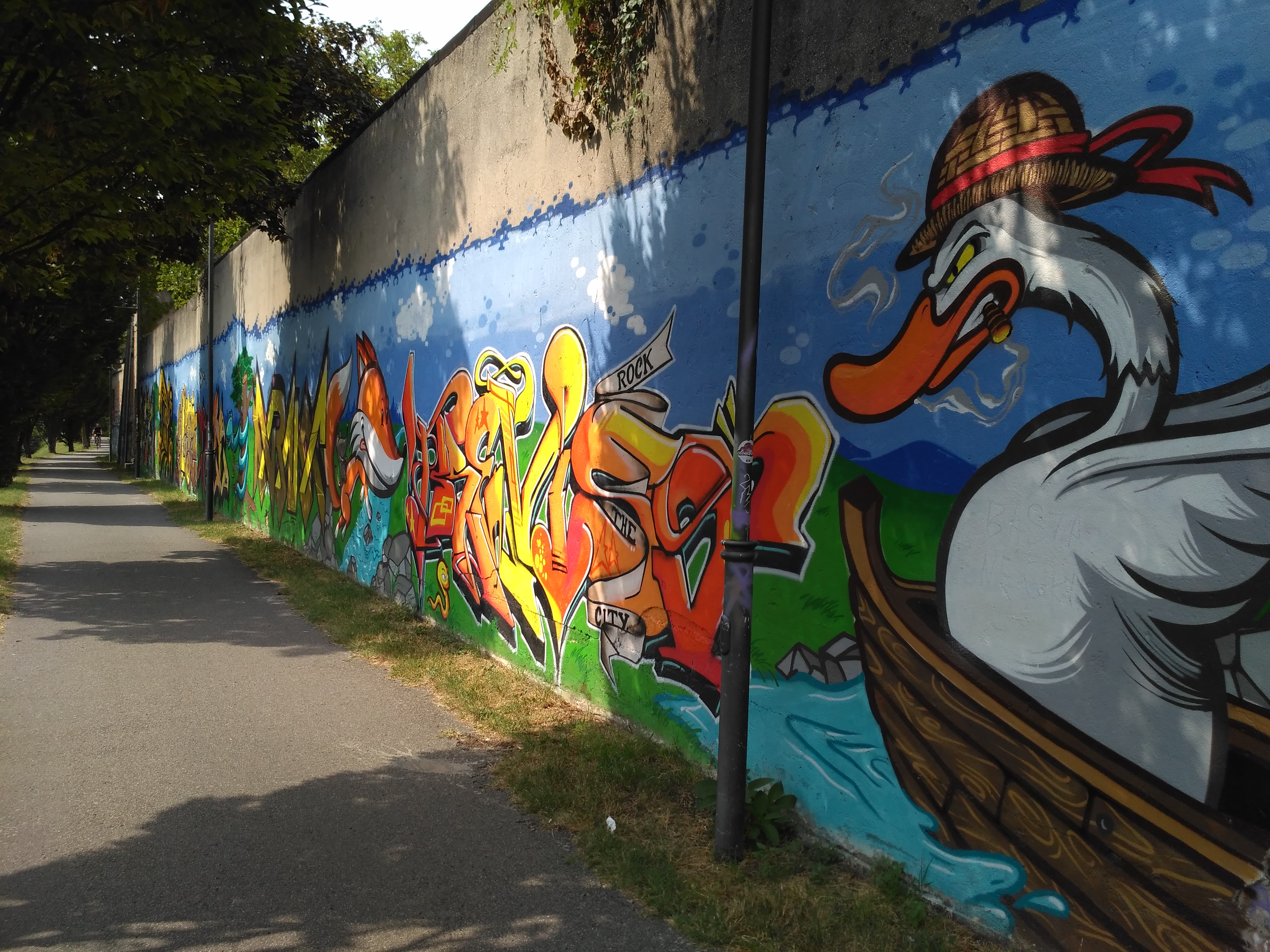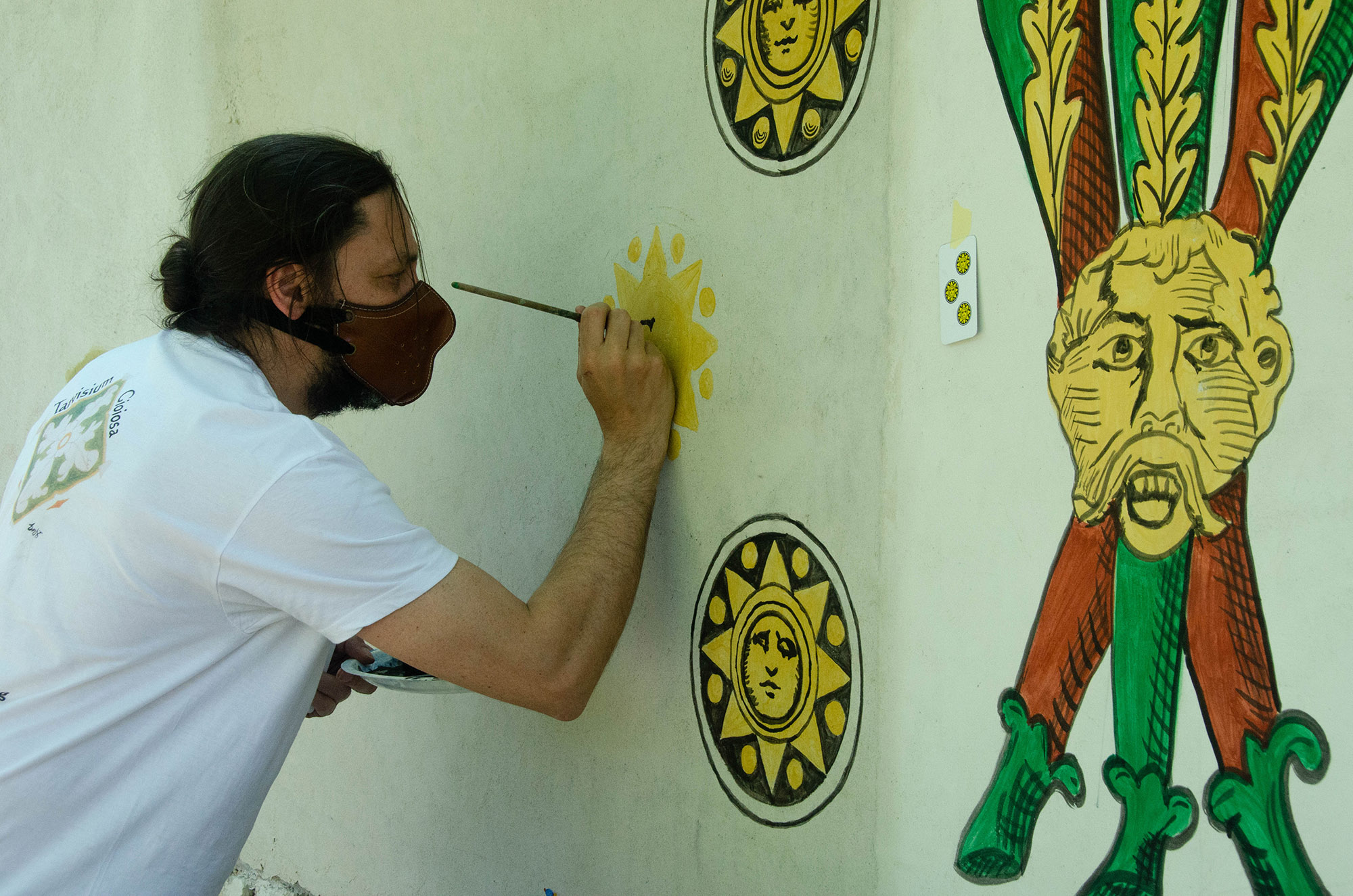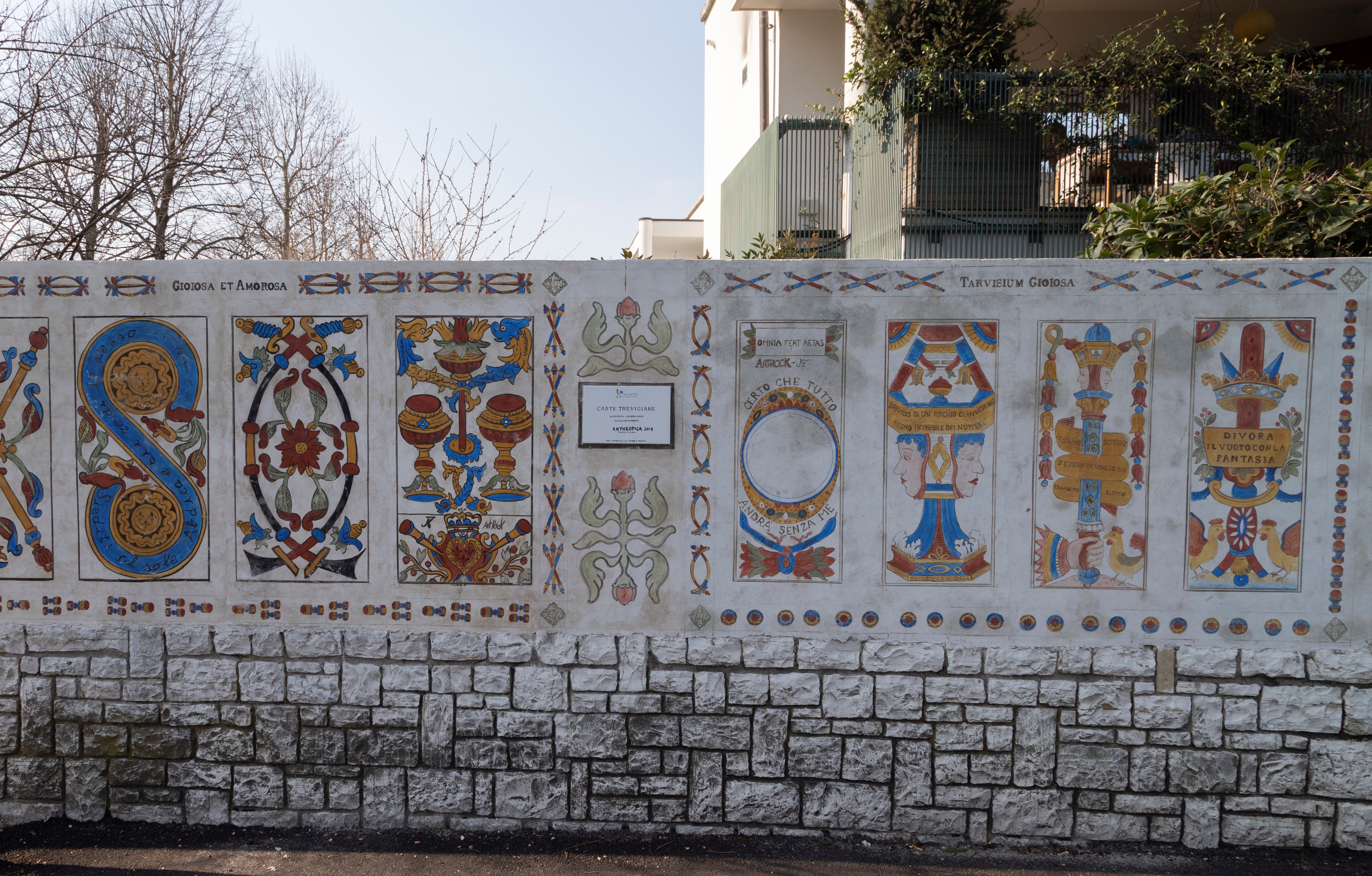Regaining a sense of belonging
RAD
Restera Art District
The Restera Art District, RAD, is the fruit of the artistic and participatory regeneration process of a picturesque place on the edge of Treviso, a small city in northeastern Italy, where the urban built environment blends with the thriving nature of the Sile River. It has been achieved through dozens of artistic works and interventions, along with traditional banquets, concerts, gardening and other cultural and recreational activities, carried out by the Anthropica Festival during 2015-2022.
Italy
Local
Treviso
Silea (TV)
Silea (TV)
It addresses urban-rural linkages
It refers to a physical transformation of the built environment (hard investment)
Yes
2022-05-19
No
No
No
As an individual partnership with other persons/organisation(s)
Treviso, a small city in northeastern Italy, is known for its waters, that is, for the many rivers that flow through its territory and have marked its culture and development. The longest and best known is the Sile River, which even Dante mentioned in his Divine Comedy, and which, besides providing water for drinking and irrigation, served as a communication route and source of energy. Hence, just outside the city, the Sile is surrounded by both fields and factories, in a unique anthropic landscape cut by a trail that follows it to the sea, bordering the Venice Lagoon, and which is called “Restera” to recall the rope (restis, in Latin) formerly used to pull boats upstream.
The Restera Art District is the product of the artistic regeneration of this charming, and so much-loved, urban and rural area on the edge of Treviso, where an old and renewed built environment blends with the lush nature of the Sile River. It began in 2014-15 with the Anthropica Cultural Festival, which mixed an anthropological view with different artistic languages, and every spring realized numerous artistic works and interventions, mainly murals and graffiti (even with the antique fresco technique), concerts, plays, exhibitions, talks, etc., together with endless traditional lunches and other recreational activities for all age. All this, precisely to creatively and entertainingly foster people's civic engagement and sustainable development, exactly by regaining for the community the meaning of that place and a sense of belonging, at once connected to the historical heritage and fostering the preservation of the environment.
The fact that more and more residents and tourists choose RAD for a walk or other outdoor activities (up to several thousand people on spring weekends), other associations carry on Anthropica’s activities in the area, a few small businesses have opened, all the surrounding built environment has been upgraded, while its value keeps rising, points to the success achieved.
The Restera Art District is the product of the artistic regeneration of this charming, and so much-loved, urban and rural area on the edge of Treviso, where an old and renewed built environment blends with the lush nature of the Sile River. It began in 2014-15 with the Anthropica Cultural Festival, which mixed an anthropological view with different artistic languages, and every spring realized numerous artistic works and interventions, mainly murals and graffiti (even with the antique fresco technique), concerts, plays, exhibitions, talks, etc., together with endless traditional lunches and other recreational activities for all age. All this, precisely to creatively and entertainingly foster people's civic engagement and sustainable development, exactly by regaining for the community the meaning of that place and a sense of belonging, at once connected to the historical heritage and fostering the preservation of the environment.
The fact that more and more residents and tourists choose RAD for a walk or other outdoor activities (up to several thousand people on spring weekends), other associations carry on Anthropica’s activities in the area, a few small businesses have opened, all the surrounding built environment has been upgraded, while its value keeps rising, points to the success achieved.
Community
Engagement
Arts
Anthropology
Urban regeneration
Sustainability is at the very heart of RAD, as it has regenerated an urban area with a unique environmental value, namely an area on the edge of the city where industrial archaeology blends with the nature flourishing along the Sile River, which is a Regional Natural Park since 1991. So RAD originates from and explicitly integrates the complete, fragile river ecosystem, while stressing the value of preserving natural resources, firstly water: the Sile River Natural Park indeed has supported the Anthropica Festival, out of which RAD was born, with its symbolic patronage.
RAD’s commitment to sustainability goes even further, to the highest level of ambition: given the power of art to envision and shape the future, the project and artists involved explicitly support a cultural and behavioural paradigm shift by advocating for sustainable values, practices and lifestyles. Accordingly, many, if not most of RAD’s artworks, especially graffiti and murals, address sustainability, biodiversity and natural resources, mainly water, inspired by the surrounding environment and in turn contributing to its preservation and promotion.
Since the “Restera”, that is, the path that runs along the Sile River from Treviso to the Venice Lagoon and the sea, is a renowned attraction for locals and tourists (also called “Sile Greenway”), RAD contributes actively to sustainable tourism and its economic activities, i.e. shops renting bicycles, in addition to bars and B&B. Also located right in the heart of RAD is architect Boeri's famous “Vertical Forests”, which draws on and perpetuates RAD's soul with its murals addressing environmental issues, including one depicting Greta Thunberg.
But sustainability is reflected in almost every aspect of the project, from the colours and recyclable dishes used at the events, to the overall circular waste management of Anthropica. That is way the local waste management company Contarina used to honour it with the “Eco-sustainable Event” award.
RAD’s commitment to sustainability goes even further, to the highest level of ambition: given the power of art to envision and shape the future, the project and artists involved explicitly support a cultural and behavioural paradigm shift by advocating for sustainable values, practices and lifestyles. Accordingly, many, if not most of RAD’s artworks, especially graffiti and murals, address sustainability, biodiversity and natural resources, mainly water, inspired by the surrounding environment and in turn contributing to its preservation and promotion.
Since the “Restera”, that is, the path that runs along the Sile River from Treviso to the Venice Lagoon and the sea, is a renowned attraction for locals and tourists (also called “Sile Greenway”), RAD contributes actively to sustainable tourism and its economic activities, i.e. shops renting bicycles, in addition to bars and B&B. Also located right in the heart of RAD is architect Boeri's famous “Vertical Forests”, which draws on and perpetuates RAD's soul with its murals addressing environmental issues, including one depicting Greta Thunberg.
But sustainability is reflected in almost every aspect of the project, from the colours and recyclable dishes used at the events, to the overall circular waste management of Anthropica. That is way the local waste management company Contarina used to honour it with the “Eco-sustainable Event” award.
If beauty will save the world, RAD will help with its collective art!
RAD, and the Anthropica Festival out of which was born, serve exactly the aim of bringing art into people’s life, that is, collectively producing and spreading beauty, aesthetic and beyond, in the places where people experience everyday lives, and precisely to enhance their quality and support people’s sense of belonging and community engagement. Indeed, the Anthropica Manifesto is named precisely “Art is social relationships” (see attached) in order to invite people both to immerse in the art experience, and to take care of their social relations. In a nutshell, the dozens of artistic works and interventions realized during Anthropica, mainly murals explicitly drawing on local culture and traditions (like the “fresco” series on local playing cards), but also popular dances, concerts, gardening and peculiar lunches where hundreds of people ate together at the same, very long table along the Sile River, led to the collective regeneration of one of the most beloved place of Treviso, that is to the Restera Art District. And the fact that other people and associations, after Anthropica’s conclusion in 2021, carry out similar artistic and social activities is probably the best indicator of RAD's success.
Even the choice of location is far from random: RAD was born along the Sile to leverage and enhance the historic, natural and aesthetic value of that place, where industrial archaeology and urban built environment merge with river nature. Indeed, not only have the number of people choosing the Restera and RAD for their daily or Sunday walk increased brutally (as also indicated by the hundreds of thousands of social media interactions, from Google Maps to Instagram), but also the surrounding houses sharply increased their economic value, accordingly to local newspapers and studies, while new and expensive buildings appeared: though this process is by no means due to RAD alone, RAD has surely helped it
RAD, and the Anthropica Festival out of which was born, serve exactly the aim of bringing art into people’s life, that is, collectively producing and spreading beauty, aesthetic and beyond, in the places where people experience everyday lives, and precisely to enhance their quality and support people’s sense of belonging and community engagement. Indeed, the Anthropica Manifesto is named precisely “Art is social relationships” (see attached) in order to invite people both to immerse in the art experience, and to take care of their social relations. In a nutshell, the dozens of artistic works and interventions realized during Anthropica, mainly murals explicitly drawing on local culture and traditions (like the “fresco” series on local playing cards), but also popular dances, concerts, gardening and peculiar lunches where hundreds of people ate together at the same, very long table along the Sile River, led to the collective regeneration of one of the most beloved place of Treviso, that is to the Restera Art District. And the fact that other people and associations, after Anthropica’s conclusion in 2021, carry out similar artistic and social activities is probably the best indicator of RAD's success.
Even the choice of location is far from random: RAD was born along the Sile to leverage and enhance the historic, natural and aesthetic value of that place, where industrial archaeology and urban built environment merge with river nature. Indeed, not only have the number of people choosing the Restera and RAD for their daily or Sunday walk increased brutally (as also indicated by the hundreds of thousands of social media interactions, from Google Maps to Instagram), but also the surrounding houses sharply increased their economic value, accordingly to local newspapers and studies, while new and expensive buildings appeared: though this process is by no means due to RAD alone, RAD has surely helped it
RAD, based as it is on street and socially engaged art, is by vocation inclusive, both in the open and participatory method by which it was designed, and in its final form. RAD stems from Anthropica’s original desire to spread art in public streets, so as to ensure the highest level of accessibility and affordability for all, and all the time (with a focus on the poor and marginalized who live our streets, almost automatically excluded from richest art venues). Also the charter of La Pulpería Association, which has officially implemented Anthropica and RAD, states inclusion, no-discrimination, equality and other democratic principles. In addition, close collaboration with local municipalities, which have officially and economically supported Anthropica and RAD, and have the legal authority over public ground, guarantees for RAD’s democratic and inclusive governance.
Another trait that shaped RAD (likewise stated in La Pulpería’s bylaws) is its ambition to promote people’s engagement and empowerment. Starting from street-artists themselves, since, when it all began in 2014-15, street-art was basically illegal, and street-artists were not socially accepted. Thus, the birth of RAD was inherently an emancipatory and inclusive process, which locally led to the social recognition and appreciation of this art form, now spread throughout Treviso.
The very name Anthropica fosters intercultural bridges and human diversity, as well as its Manifesto “Art is social relations” pushes for social interactions, and many RAD’s artworks and activities explicitly support inclusion and solidarity, raise awareness of injustice, engage refugees, support intergenerational exchanges, etc. It is clearer with two examples: inspired by RAD, some high school students decided to mainstream gender equality with a mural on the local “Woman Centre” along the Sile; other organizations have taken RAD's example to celebrate Italian freedom from fascism on April 25 along the Sile to reach more people
Another trait that shaped RAD (likewise stated in La Pulpería’s bylaws) is its ambition to promote people’s engagement and empowerment. Starting from street-artists themselves, since, when it all began in 2014-15, street-art was basically illegal, and street-artists were not socially accepted. Thus, the birth of RAD was inherently an emancipatory and inclusive process, which locally led to the social recognition and appreciation of this art form, now spread throughout Treviso.
The very name Anthropica fosters intercultural bridges and human diversity, as well as its Manifesto “Art is social relations” pushes for social interactions, and many RAD’s artworks and activities explicitly support inclusion and solidarity, raise awareness of injustice, engage refugees, support intergenerational exchanges, etc. It is clearer with two examples: inspired by RAD, some high school students decided to mainstream gender equality with a mural on the local “Woman Centre” along the Sile; other organizations have taken RAD's example to celebrate Italian freedom from fascism on April 25 along the Sile to reach more people
RAD is a direct expression of civil society, as evidenced by its history: it began with the birth of the cultural association La Pulpería in 2014, whose bylaws declared its participatory governance, as well as its purpose to contribute to the civic growth of people and empower the community by spreading arts and culture along with sustainability, participation and new models of sociability. The Anthropica Cultural Festival was accordingly conceived and started operating in 2015, immediately engaging citizens and stakeholders as equal partners and advisers in co-desgning and co-working on the project, which has always been based on free and voluntary participation. There was no idea at the beginning about developing the Restera Art District, an achievement which nobody could even imagine, even though there were some undefined hopes and thoughts. As is often the case in innovative participatory projects, citizens and stakeholders, under the democratic leadership of La Pulpería, co-designed and implemented goals and activities until their aspirations took concrete form, which in this case resulted into the artistic regeneration of the “Restera” pathway along the Sile River, i.e., the Restera Art District. RAD thus is a real, participatory and artistic process of urban regeneration. But its participatory spirit does not stop here, since RAD have effectively empowered and sustained grassroots initiatives beyond its implementation, thus enabling the community to take agency. Since last edition of the Anthropica Festival took place in the summer of 2021, giving birth to RAD, old and new associations and stakeholders started implementing similar initiatives in the area, under the democratic control of local municipalities, which have always supported and overseen the project. For example, architect Boeri's Vertical Forest building called “Ca' delle Alzaie,” which stands in the heart of RAD, have introduced murals on its walls that draw on and perpetuate the spirit of RAD.
RAD has always been very committed to building partnerships, as it is absolutely aware that its very existence is based on the social recognition it is able to obtain and maintain: without it, as a bottom-up experiment in the public space that stands outside the usual norms and laws regulating both public and private property, it simply would not exist. In other words, RAD is a kind of community art museum, but this status is not regulated by law, only by social approval: “Art is social relationships” – says the Anthropica Manifesto – and so it is the Restera Art District!
Indeed, the engagement of people and the local community is one of the main reasons, if not the main one, behind the creation of La Pulpería, Anthropica and RAD: thus, when someone at night defaced Anthropica’s murals with racist, offensive writings years ago, some citizens spontaneously gathered to erase them and restore the original artworks!
Anthropica and RAD have always worked with local schools, civil society associations, citizens and stakeholders in the co-design and implementation of their activities, i.e., Anthropica is among the founders of “Treviso Rete Festival” an informal but very active partnership of local festivals which ensures coordination and cooperation among them. From the outset, Anthropica and RAD have partnered with the municipalities of Silea and Treviso, which supported them financially, operationally and officially with their patronage. At a higher level, Anthropica has gained the patronage of “Regione Veneto” and the Sile River Regional Natural Park.
RAD is also actively involved in the Italian street-art movement, with its informal partnerships, and has sometimes cooperated internationally, as its anthropological vocation feeds on a global approach. Applying to the NEB prize is indeed a new step that RAD takes to start participating officially and actively at the EU level (as La Pulpería’s charter stated from the very beginning: it was just a matter of time!).
Indeed, the engagement of people and the local community is one of the main reasons, if not the main one, behind the creation of La Pulpería, Anthropica and RAD: thus, when someone at night defaced Anthropica’s murals with racist, offensive writings years ago, some citizens spontaneously gathered to erase them and restore the original artworks!
Anthropica and RAD have always worked with local schools, civil society associations, citizens and stakeholders in the co-design and implementation of their activities, i.e., Anthropica is among the founders of “Treviso Rete Festival” an informal but very active partnership of local festivals which ensures coordination and cooperation among them. From the outset, Anthropica and RAD have partnered with the municipalities of Silea and Treviso, which supported them financially, operationally and officially with their patronage. At a higher level, Anthropica has gained the patronage of “Regione Veneto” and the Sile River Regional Natural Park.
RAD is also actively involved in the Italian street-art movement, with its informal partnerships, and has sometimes cooperated internationally, as its anthropological vocation feeds on a global approach. Applying to the NEB prize is indeed a new step that RAD takes to start participating officially and actively at the EU level (as La Pulpería’s charter stated from the very beginning: it was just a matter of time!).
The Restera Art District, that is, the participatory regeneration of a trait of the Restera way along the Sile River, is the main achievement of the Anthropica Festival, which took place every spring during 2015-21 to promote new artistic, cultural and social actions and models. As its name suggests, Anthropica was transdisciplinary by vocation: it aimed precisely to develop and apply a genuine anthropological (and social sciences) understanding of reality, with the political goal of supporting local sustainable development and community engagement, thanks mainly to the creative and communicative power of art! So RAD is essentially transdisciplinary: its history and current form combine all these aims, features and disciplines, and more!
Given this vocation, street-art has turned out to be one of most powerful tools available, as it allows to convey an infinity of messages to all the people, i.e. to engage a mixed community of citizens directly in their neighbourhoods, make them feel a new sense of belonging and even change their daily existence: all the more so, if it is designed and implemented with a place-based, anthropological and participatory approach, as RAD did. With the same goal of engaging people and strengthening their sense of belonging and sociability, RAD and Anthropica used also to organize street-lunches with hundreds of people sitting in a long table along the river, collective gardening, concerts, from popular to electronic dances, photo exhibitions, book presentations, etc.
In a nutshell, RAD’s artistic, sustainable and participatory urban regeneration process required the integration of formal and non-formal knowledge, the involvement of people from various political, social and economic fields, both from the neighbourhood and institutions, the mixing of traditional knowledge and values with new habits and technologies, as well as the contribution of diverse arts, disciplines (anthropology, architecture, urbanism, etc,) and social activities.
Given this vocation, street-art has turned out to be one of most powerful tools available, as it allows to convey an infinity of messages to all the people, i.e. to engage a mixed community of citizens directly in their neighbourhoods, make them feel a new sense of belonging and even change their daily existence: all the more so, if it is designed and implemented with a place-based, anthropological and participatory approach, as RAD did. With the same goal of engaging people and strengthening their sense of belonging and sociability, RAD and Anthropica used also to organize street-lunches with hundreds of people sitting in a long table along the river, collective gardening, concerts, from popular to electronic dances, photo exhibitions, book presentations, etc.
In a nutshell, RAD’s artistic, sustainable and participatory urban regeneration process required the integration of formal and non-formal knowledge, the involvement of people from various political, social and economic fields, both from the neighbourhood and institutions, the mixing of traditional knowledge and values with new habits and technologies, as well as the contribution of diverse arts, disciplines (anthropology, architecture, urbanism, etc,) and social activities.
RAD, and the Anthropica Cultural Festival from which it was born, are truly successful examples of innovation, particularly social innovation, both in their fields and in their actions, methods and results. Indeed, though urban regeneration itself is not an entirely new practice for today's societies, the combination of different approaches, disciplines, actors, methods, technologies, etc. can lead to a very innovative practice of regenerating the built environment. As it is in our opinion the case for RAD, and its peculiar mix of disciplines and approaches, which combines anthropology, urbanism and other social-sciences with artistic and creative languages, above all street-art, and these in turn with social and environmental issues and activities (collective gardening, lunches, etc.), with the aim to foster sustainable development, and people’s engagement, sense of belonging and quality of life.
Actually street-art itself, although now widespread in Europe, is still not socially accepted in many places, especially in smaller cities, and this was even more true ten years ago, when Anthropica started operating: so RAD represents essentially an innovative emancipation process that has brought many urban artists from illegality and marginality to official recognition, and has in some ways contributed to the global recognition of street-art. Broadly speaking, combining a bottom-up approach with the need to gain official recognition, thus engaging with civil society and public institutions, is in its domain an innovation. In addition, the same street-art works introduced interesting innovations, e.g. combining new styles with the antique fresco technique.
Ultimately, the continuous mix of disciplines and languages, new and old habits and techniques, formal and non-formal knowledge, people with different social and cultural interests and backgrounds, grassroots dynamics with institutional needs, etc., make RAD’s project of urban regeneration truly unique and innovative
Actually street-art itself, although now widespread in Europe, is still not socially accepted in many places, especially in smaller cities, and this was even more true ten years ago, when Anthropica started operating: so RAD represents essentially an innovative emancipation process that has brought many urban artists from illegality and marginality to official recognition, and has in some ways contributed to the global recognition of street-art. Broadly speaking, combining a bottom-up approach with the need to gain official recognition, thus engaging with civil society and public institutions, is in its domain an innovation. In addition, the same street-art works introduced interesting innovations, e.g. combining new styles with the antique fresco technique.
Ultimately, the continuous mix of disciplines and languages, new and old habits and techniques, formal and non-formal knowledge, people with different social and cultural interests and backgrounds, grassroots dynamics with institutional needs, etc., make RAD’s project of urban regeneration truly unique and innovative
RAD’s approach, albeit not always explicitly developed and detailed, presents some evident traits that deserve attention. Firstly, it is intimately complex and transdisciplinary, since it mixes sciences with arts, academic teachings with non-formal knowledge, food with gardening, and so on. In addition, RAD has applied circular and sustainable methods as much as possible.
From its very design to the final result, RAD’s inclusive and participatory approach has striven to combine grassroots dynamics and ambitions with institutional requirements and official political forces, as well as with the economic interests and businesses operating in the area. Mediating between so many stakeholders has never been easy, communication failures, or worse the prevailing of private interests, have happened and are always possible, but the community's sentiment and goal have managed to survive. Hence, along with dialogue and transparency, RAD has constantly sought greater recognition and centrality in local public opinion (newspapers, televisions, and social-media), as well as greater legal protection from local governments, thanks essentially to the quality of its work, i.e. to the social consensus gained day by day in the community. RAD has relied almost exclusively on volunteerism: although this was not the initial desire, as Anthropica aspired to mix both voluntary and paid work, social gratifications still managed to motivate volunteers! Officially, RAD's leadership and organization come under La Pulpería Cultural Association, founded in 2014 and guided by a legally registered charter that promotes the inclusive, sustainable, transdisciplinary, and participatory principles outlined. RAD's operational arm has been the Anthropica Cultural Festival (composed of a larger, equally open and participatory group of people), due to the greater ability of a festival to catalyze and direct social energies in the desired direction annually. Both RAD and Anthropica are registered trademarks
From its very design to the final result, RAD’s inclusive and participatory approach has striven to combine grassroots dynamics and ambitions with institutional requirements and official political forces, as well as with the economic interests and businesses operating in the area. Mediating between so many stakeholders has never been easy, communication failures, or worse the prevailing of private interests, have happened and are always possible, but the community's sentiment and goal have managed to survive. Hence, along with dialogue and transparency, RAD has constantly sought greater recognition and centrality in local public opinion (newspapers, televisions, and social-media), as well as greater legal protection from local governments, thanks essentially to the quality of its work, i.e. to the social consensus gained day by day in the community. RAD has relied almost exclusively on volunteerism: although this was not the initial desire, as Anthropica aspired to mix both voluntary and paid work, social gratifications still managed to motivate volunteers! Officially, RAD's leadership and organization come under La Pulpería Cultural Association, founded in 2014 and guided by a legally registered charter that promotes the inclusive, sustainable, transdisciplinary, and participatory principles outlined. RAD's operational arm has been the Anthropica Cultural Festival (composed of a larger, equally open and participatory group of people), due to the greater ability of a festival to catalyze and direct social energies in the desired direction annually. Both RAD and Anthropica are registered trademarks
The long and sometimes exhausting journey that has led to RAD began in 2014 with the birth of La Pulpería, and continued until 2022 thanks to the Anthropica Festival (or rather, it continues to the present and will continue into the future, as RAD in its way lives on). Beyond the final result, an innovative project like this, able to creatively lead the complex inner life of a community, has also generated an impressive quantity and quality of ideas, expertise, know-how, skills, etc., that can and indeed should be replicated in other contexts, in virtually every EU country. All the more so considering the relevance and impact that similar initiatives have for the future of our society. RAD can transfer valuable learnings on:
• community engagement
• creation and sharing of new meanings and senses of belonging
• shaping future ambitions for communities
• participatory processes
• gentrification
• artistic urban regeneration
• socially engaged arts.
What, for example, are the real strengths and opportunities available for similar participatory processes? What about the risks and limitations? How participation can deal with gentrification in urban regeneration? Are there conditions and situations that may hamper the engagement of a representative group of people? And so on. Of course we do not claim to be exhaustive, or even correct in all respects, but we certainly have very meaningful experiences and insights to share.
Besides, we also acquired some technical and organizational skills, especially about running street-art interventions in urban regeneration processes, that can be very useful for scholars, municipalities and communities (for instance, about the need and desirability for a curatorship in street-art, so often forgotten, or other technical suggestions like the benefits of marking street-art works with commemorative plates). All the more so if the EC decides to promote this high-impact art genre, possibly starting with regulatory harmonization.
• community engagement
• creation and sharing of new meanings and senses of belonging
• shaping future ambitions for communities
• participatory processes
• gentrification
• artistic urban regeneration
• socially engaged arts.
What, for example, are the real strengths and opportunities available for similar participatory processes? What about the risks and limitations? How participation can deal with gentrification in urban regeneration? Are there conditions and situations that may hamper the engagement of a representative group of people? And so on. Of course we do not claim to be exhaustive, or even correct in all respects, but we certainly have very meaningful experiences and insights to share.
Besides, we also acquired some technical and organizational skills, especially about running street-art interventions in urban regeneration processes, that can be very useful for scholars, municipalities and communities (for instance, about the need and desirability for a curatorship in street-art, so often forgotten, or other technical suggestions like the benefits of marking street-art works with commemorative plates). All the more so if the EC decides to promote this high-impact art genre, possibly starting with regulatory harmonization.
The most frightening and complex global challenge humanity must face, and possibly solve in the next few years, is surely that of climate change: although RAD has not discovered any new technology, we all know that environmental sustainability comes through social recognition and promotion, and in this sense, the local solutions provided by RAD may turn out to be very helpful. All the more so when we consider that the hard-sciences are facing enormous problems in spreading their messages to ordinary people, whose distrust of scientific knowledge and elites is growing seriously, with all the negative consequences we know. In this context, RAD has shown a wide range of suitable languages and tools to engage people and democratically shape their perceptions and future ambitions (without resorting so heavily to the biased and anti-democratic algorithms of social media, but by leveraging people’s real bodies and lives).
Second, no less urgent as it is also closely related to the challenge above, the way RAD engages the community directly favors people’s well-being and a more beautiful, safe, equitable and inclusive society (as evidenced as well by the United Nations 2030 Agenda, and its Sustainable Development Goals, particularly the 11th “Make cities and human settlements inclusive, safe, resilient and sustainable”). Actually, current wave of scientific mistrust is much more a symptom of fear and political mistrust than a genuine (anti)scientific position per se: in fact, anti-scientific positions often go hand in hand with antidemocratic claims. Therefore, the creative and participatory engagement of communities and regeneration of the built environment locally implemented by RAD can surely help address these global challenges.
Second, no less urgent as it is also closely related to the challenge above, the way RAD engages the community directly favors people’s well-being and a more beautiful, safe, equitable and inclusive society (as evidenced as well by the United Nations 2030 Agenda, and its Sustainable Development Goals, particularly the 11th “Make cities and human settlements inclusive, safe, resilient and sustainable”). Actually, current wave of scientific mistrust is much more a symptom of fear and political mistrust than a genuine (anti)scientific position per se: in fact, anti-scientific positions often go hand in hand with antidemocratic claims. Therefore, the creative and participatory engagement of communities and regeneration of the built environment locally implemented by RAD can surely help address these global challenges.
The final and most relevant outcome of this project, which started in 2014 with the birth of La Pulpería association and continued through the annual activities of the Anthropica Festival, is the Restera Art District, RAD, which precisely concludes the artistic and participatory regeneration process of a very charming place on the edge of Treviso, where the urban built environment blends with the rural nature along the Sile River. As every street, RAD is open and accessible to all people at all time: depending on the hour, you can find elderly and moms with strollers, teenagers playing or workers relaxing, rich and poor, residents and tourists, all drawn by the sense of peace, beauty and well-being the area conveys (up to several thousand people on spring weekends). To achieve this, RAD produced dozens and dozens of street-art works, many with environmentally and socially sensitive themes; planted several (fruit) trees and plants; mobilized a net of partners and volunteers; created countless opportunities for neighbors and other citizens to meet and become acquainted with each other, always trying to include marginalized individuals (i.e. refugees), through concerts, street-food, shows, talks, exhibitions, etc. Beyond immediate outcomes, RAD has been truly effective in promoting community engagement, sustainable values and habits, people’s well-being, etc., that is, in regaining for the community the meaning of that place and a sense of belonging, at once connected to historical heritage and demonstrating that everyone, through his/her commitment, can shape the future and help solve global social and environmental challenges. Probably the best evidence of RAD's impact is that many other associations and citizens perpetuate similar social and artistic activities, while some small businesses have opened in the area, new buildings are continually being regenerated, and the value of surrounding houses is rising: albeit this is not due to RAD alone, it certainly helped.

